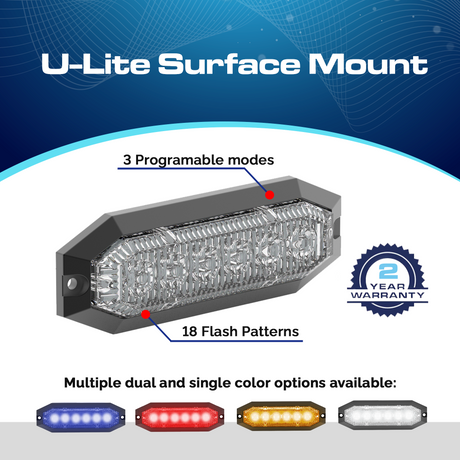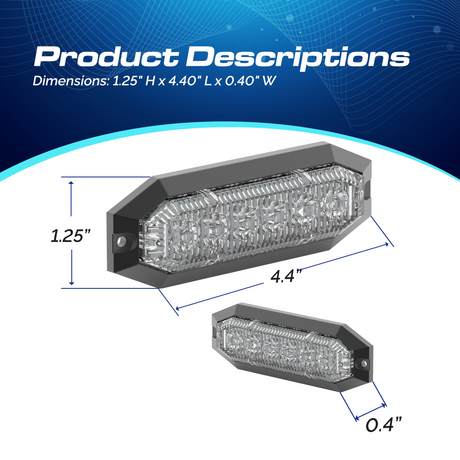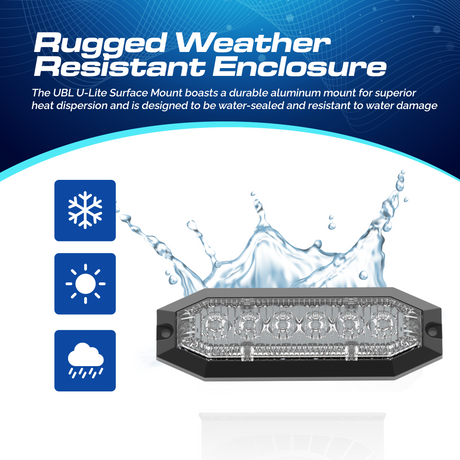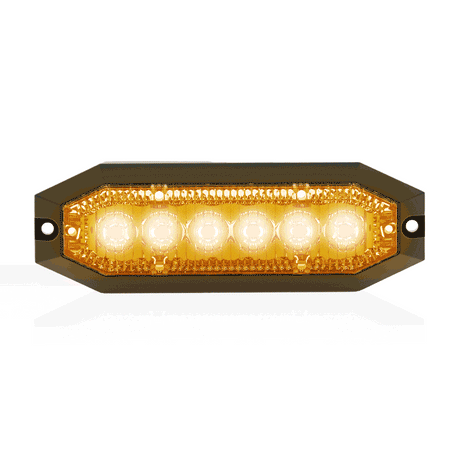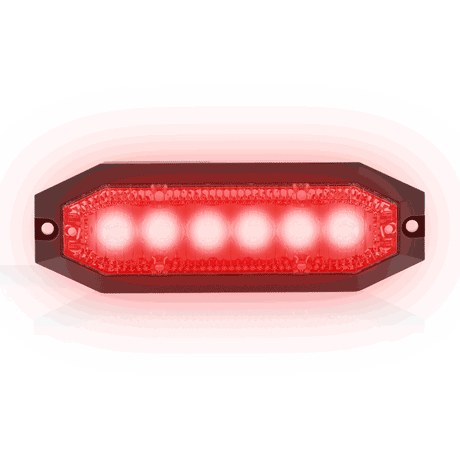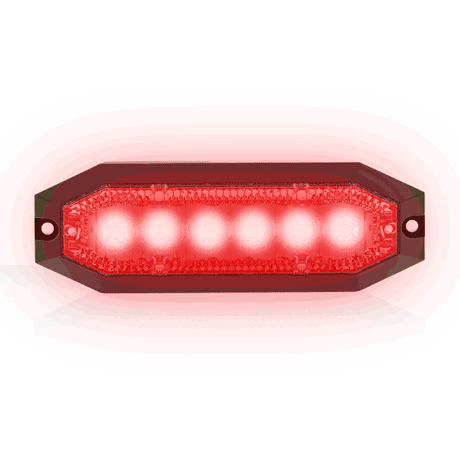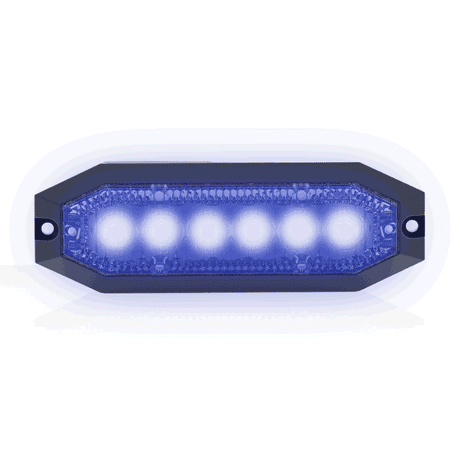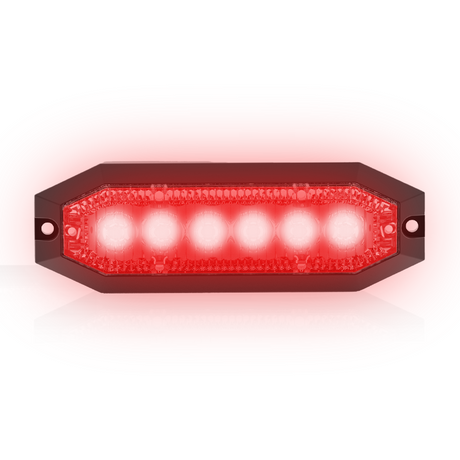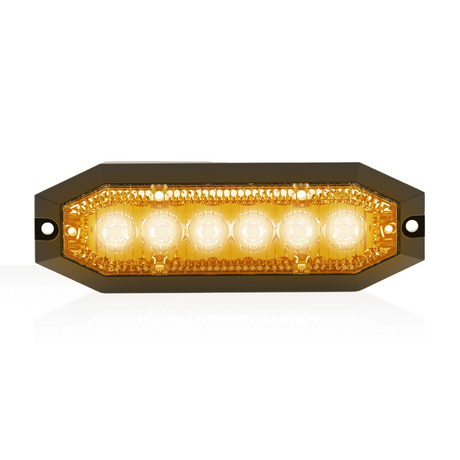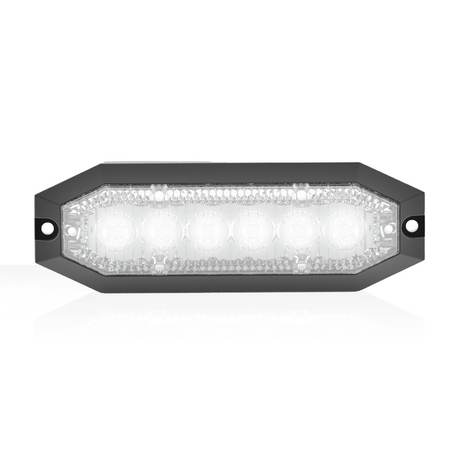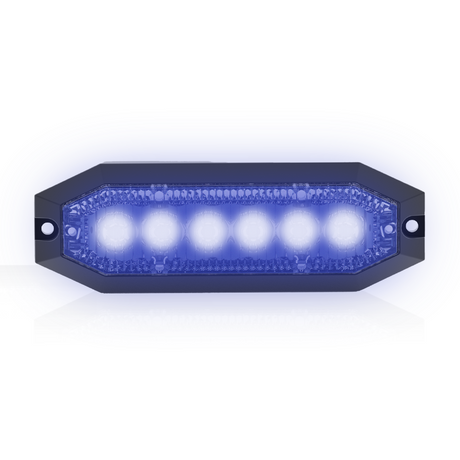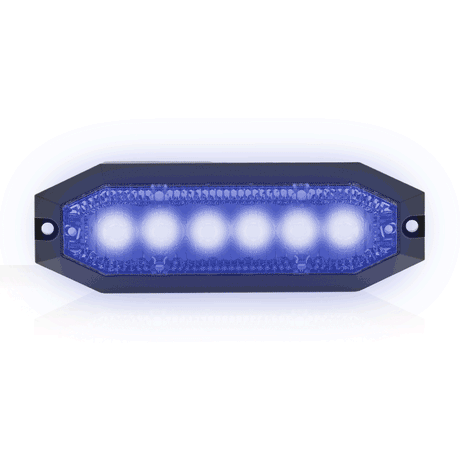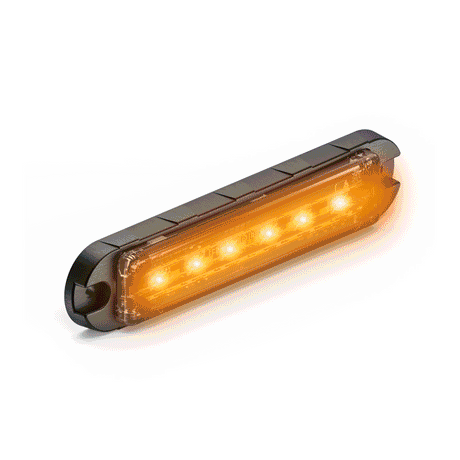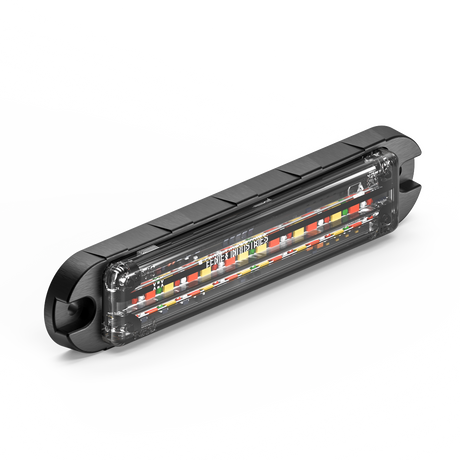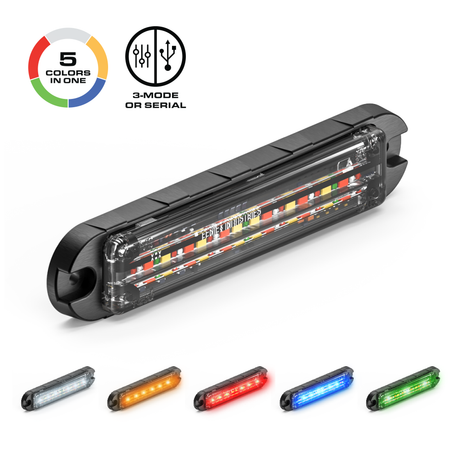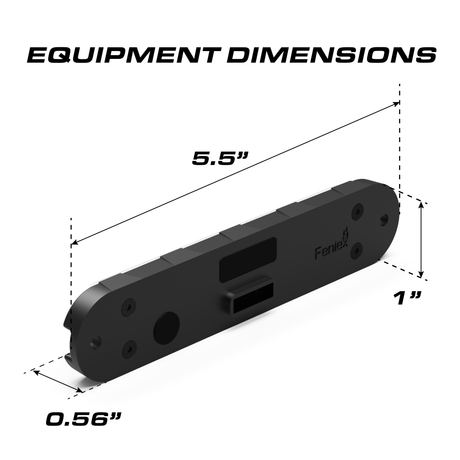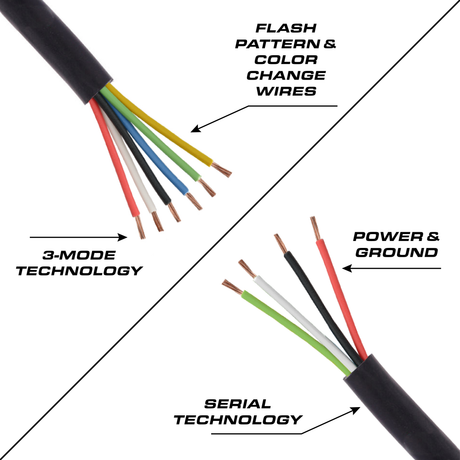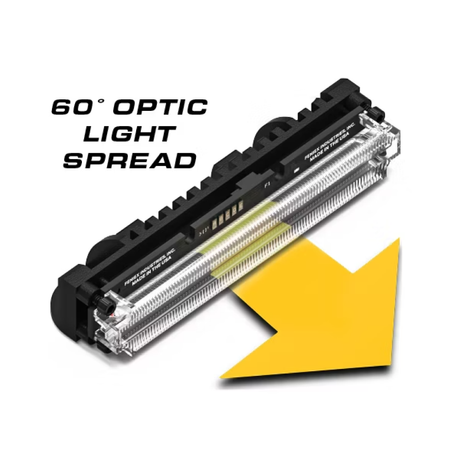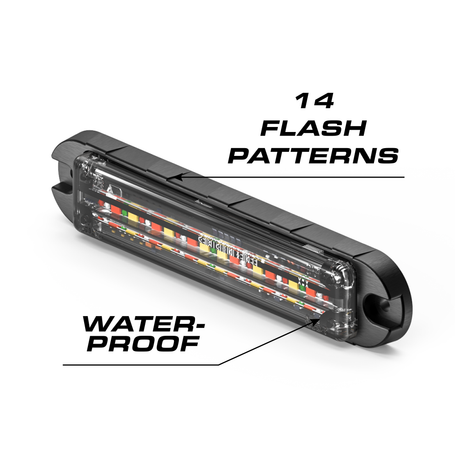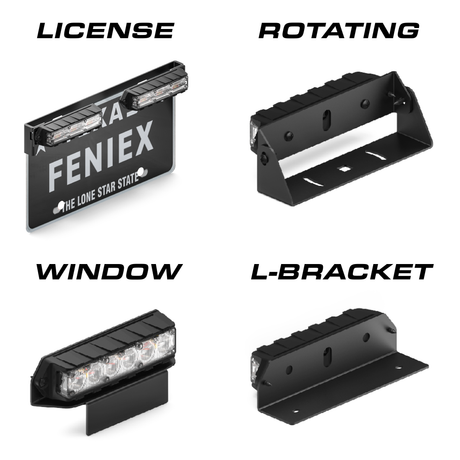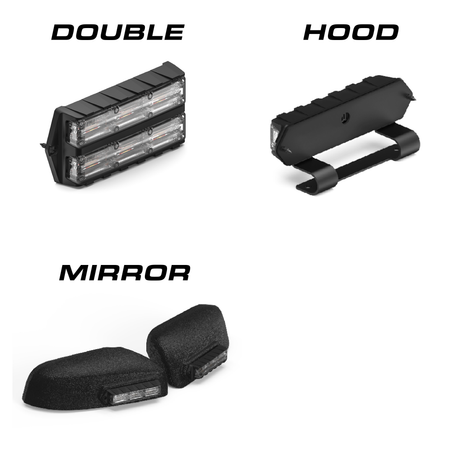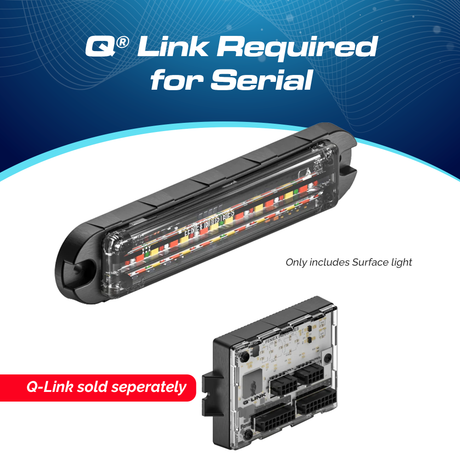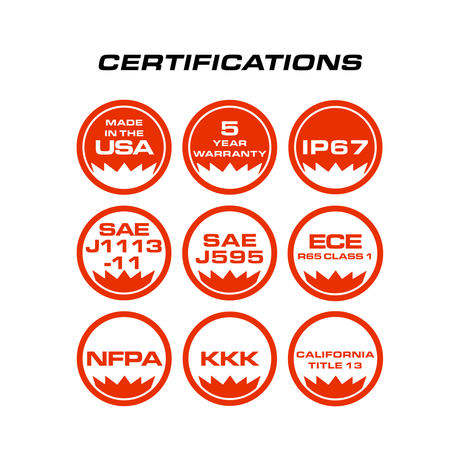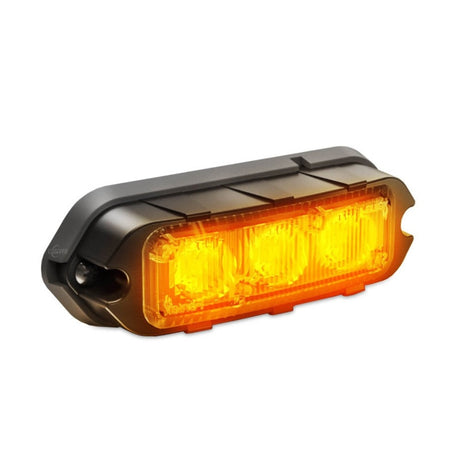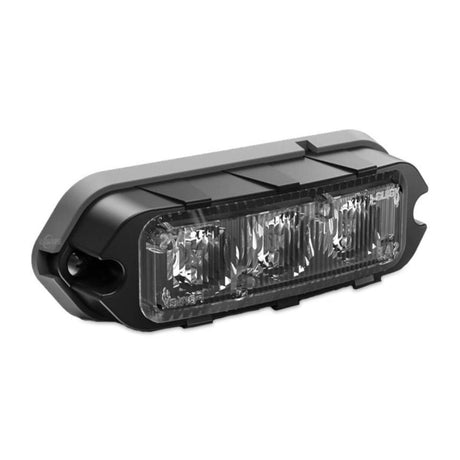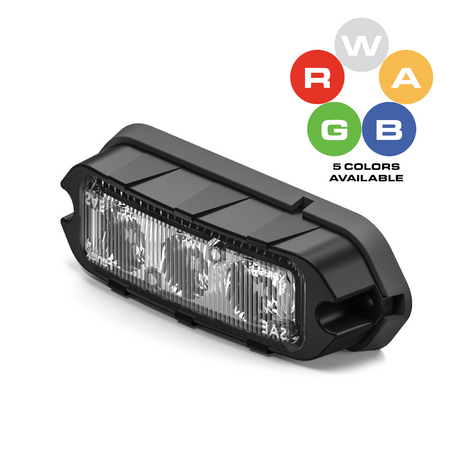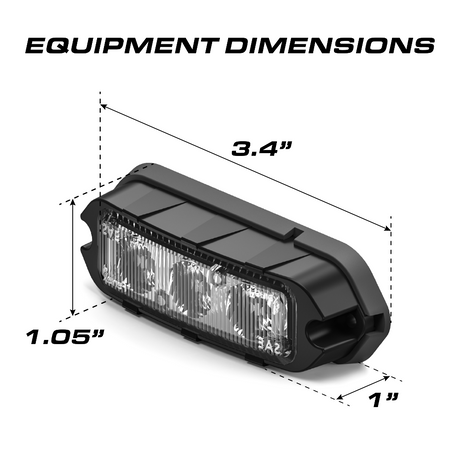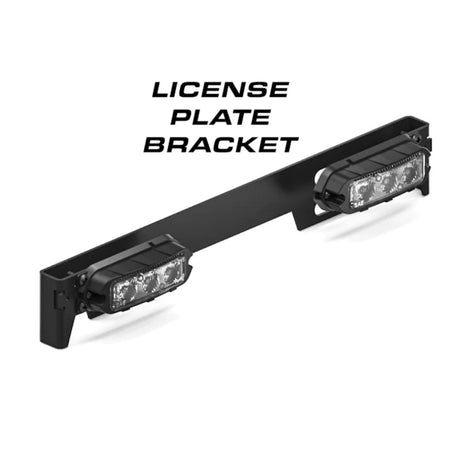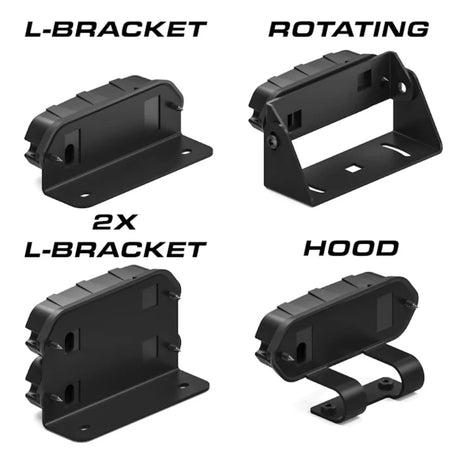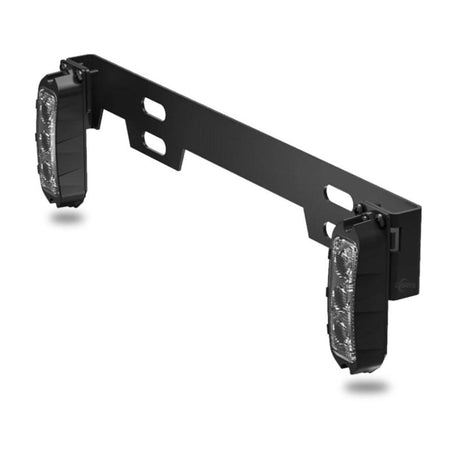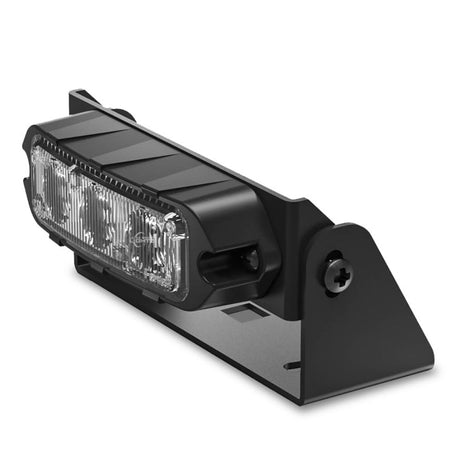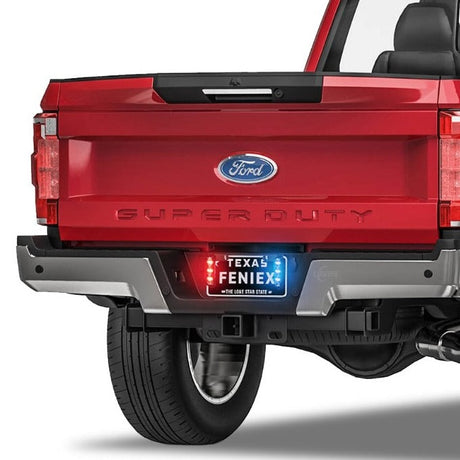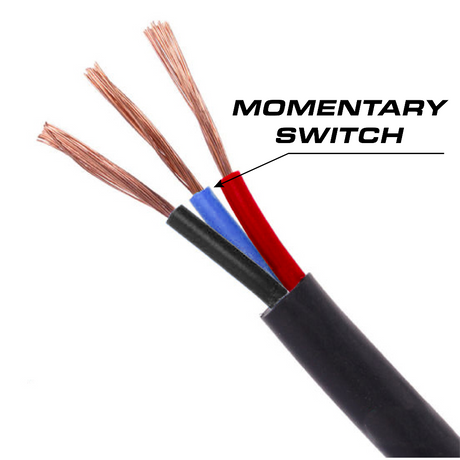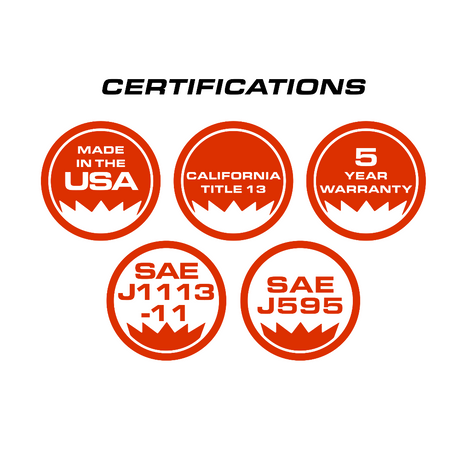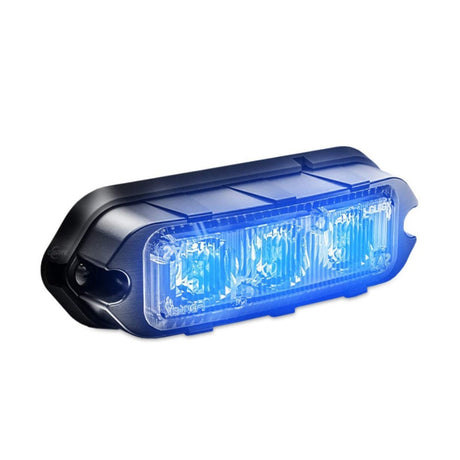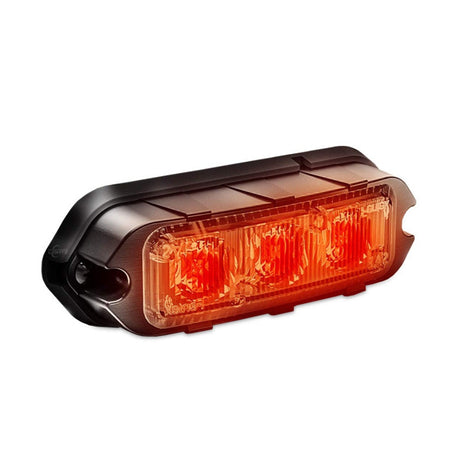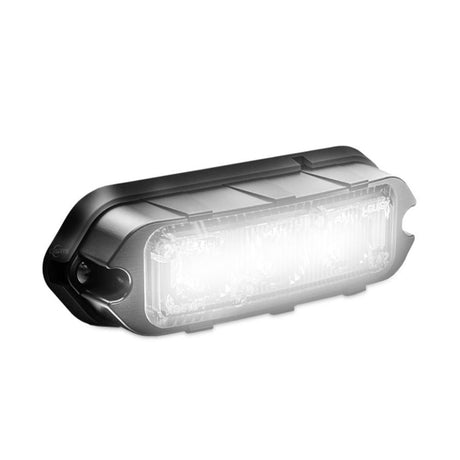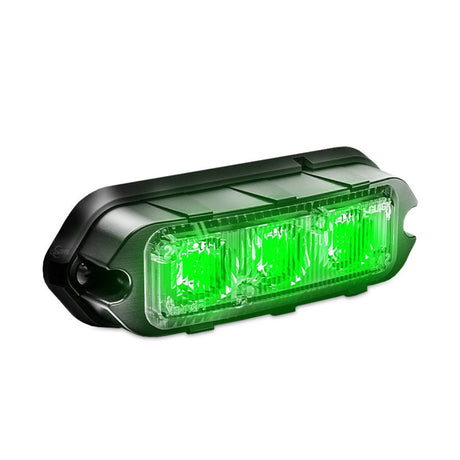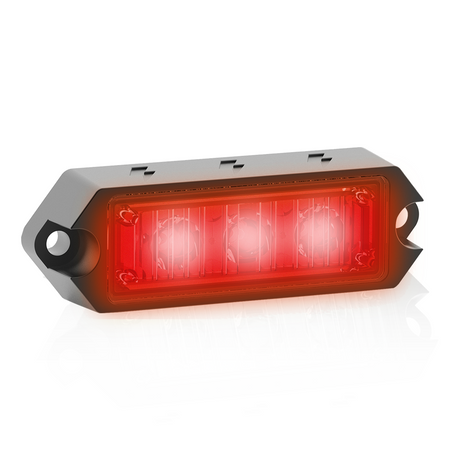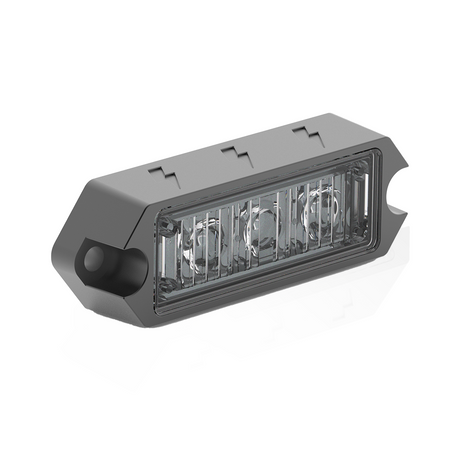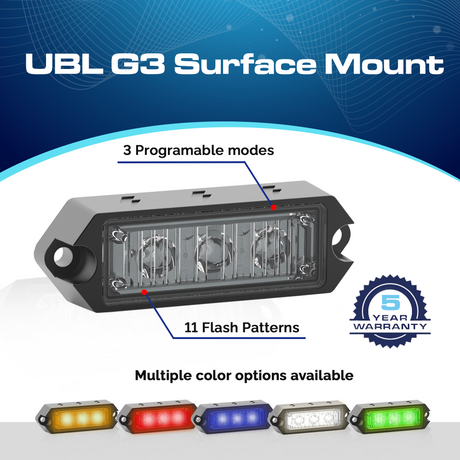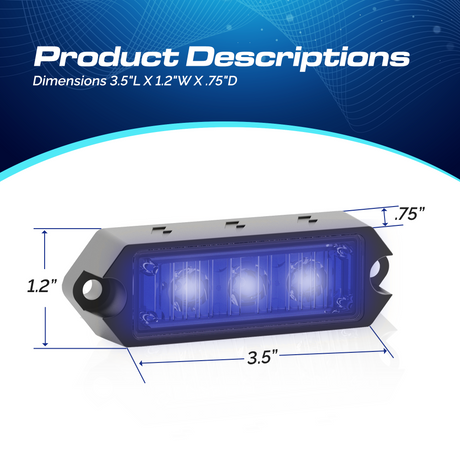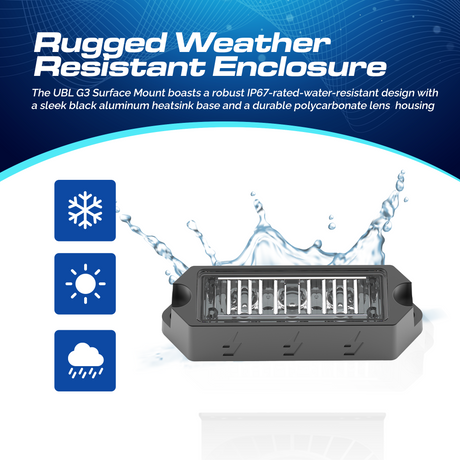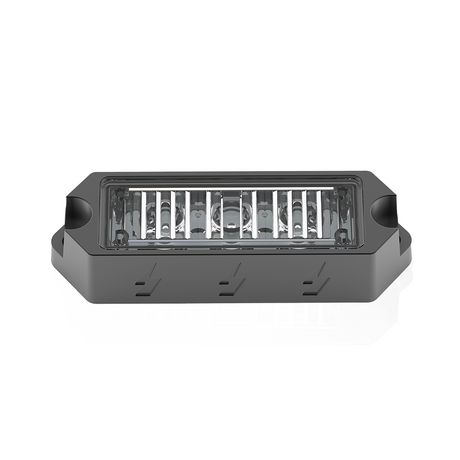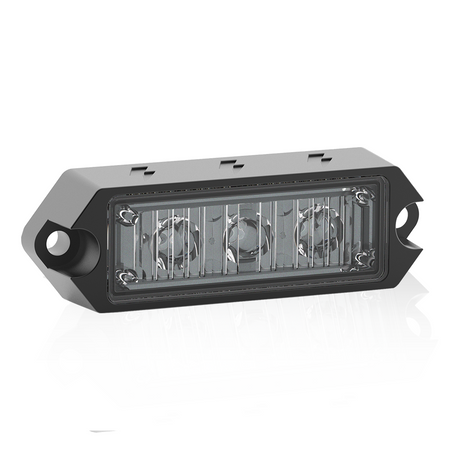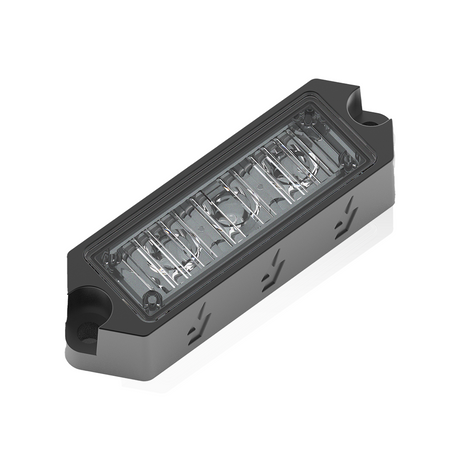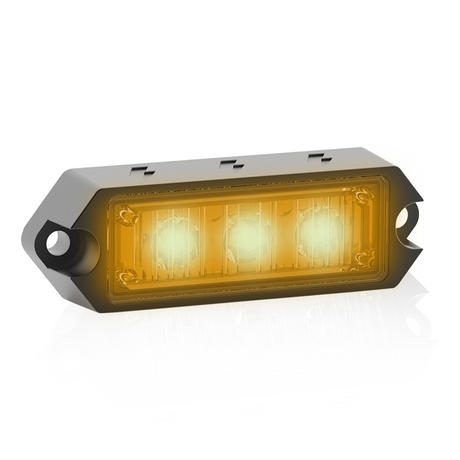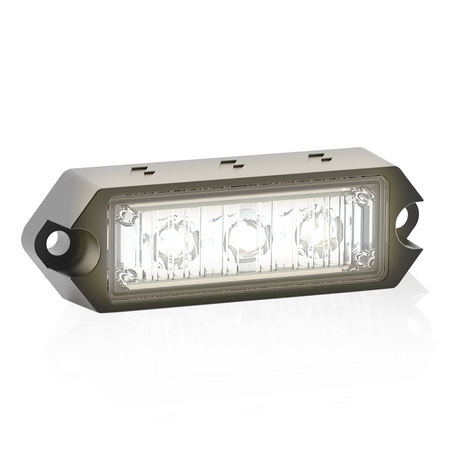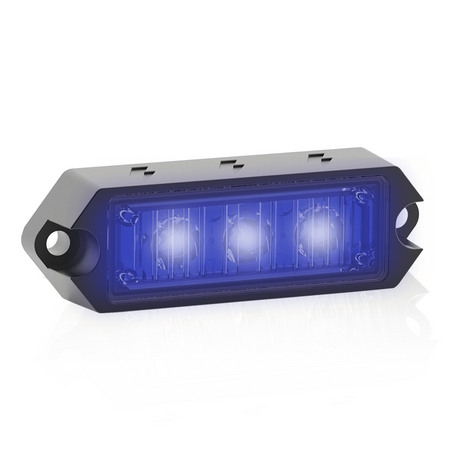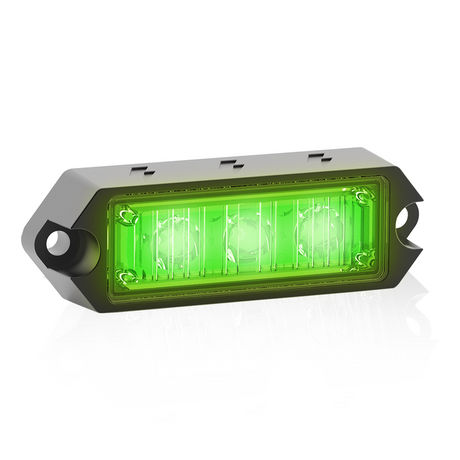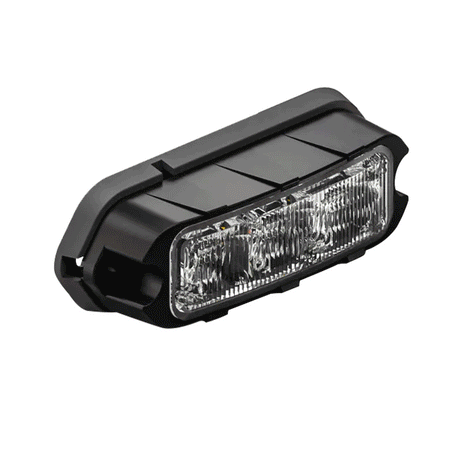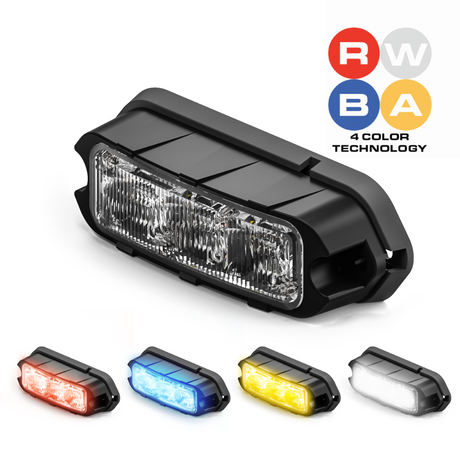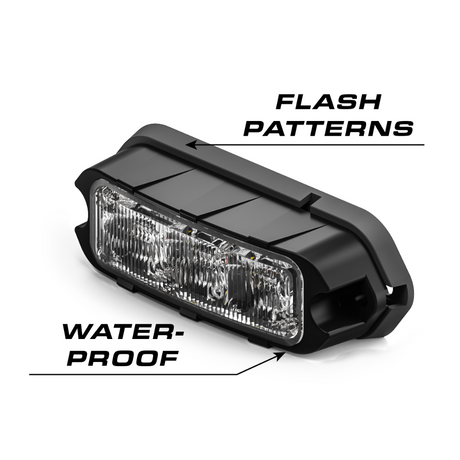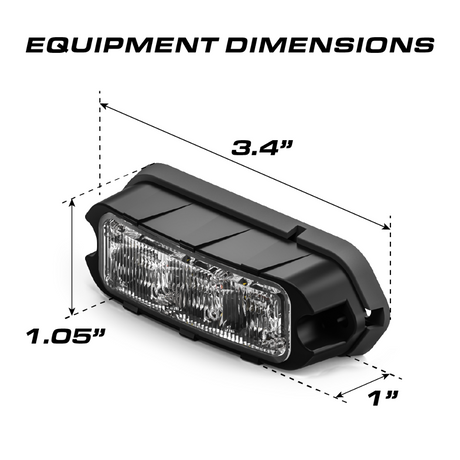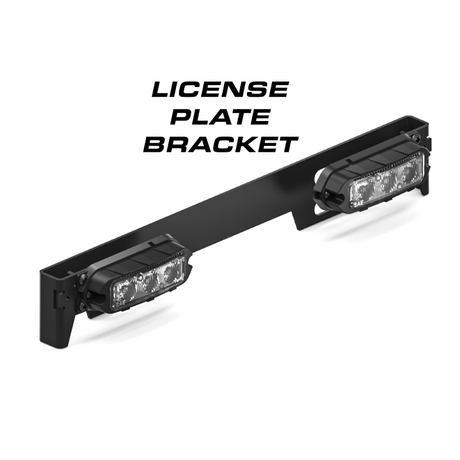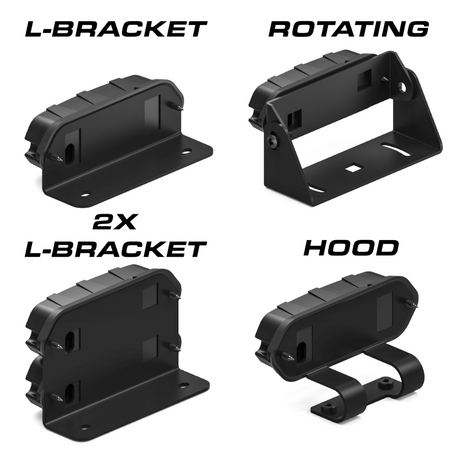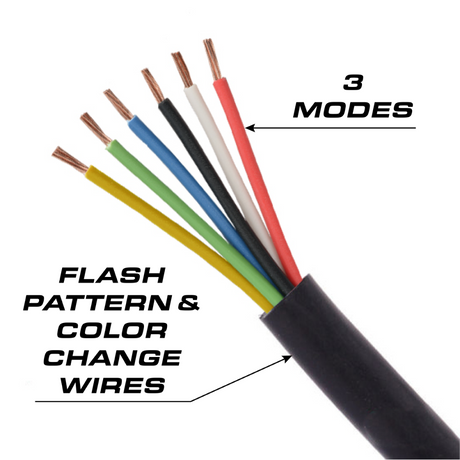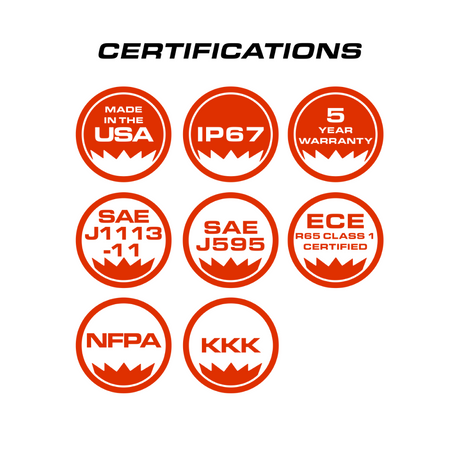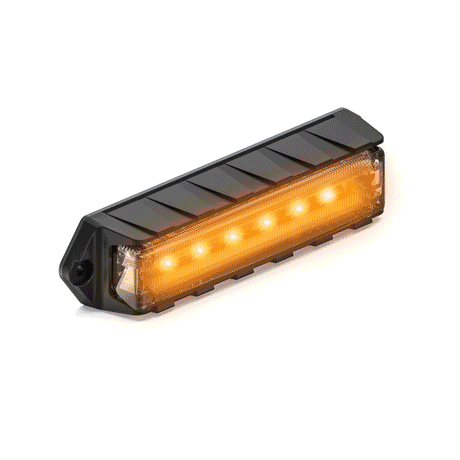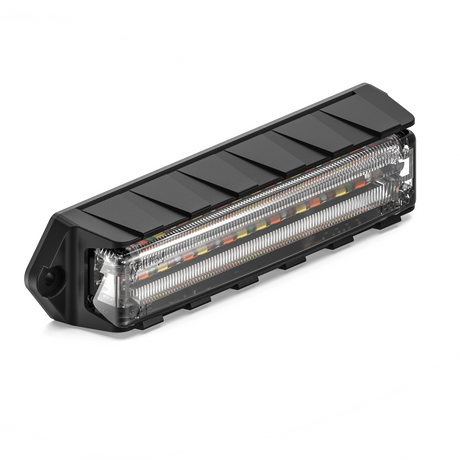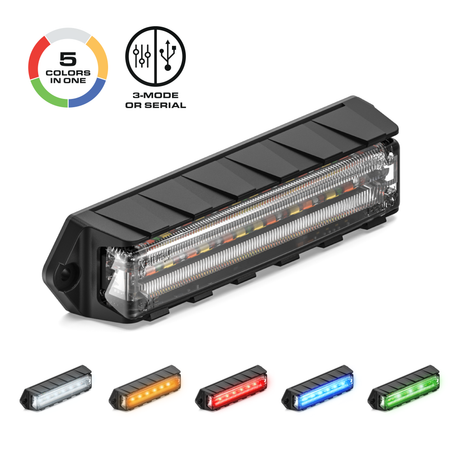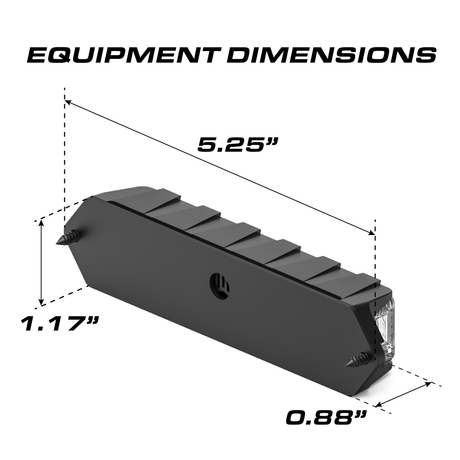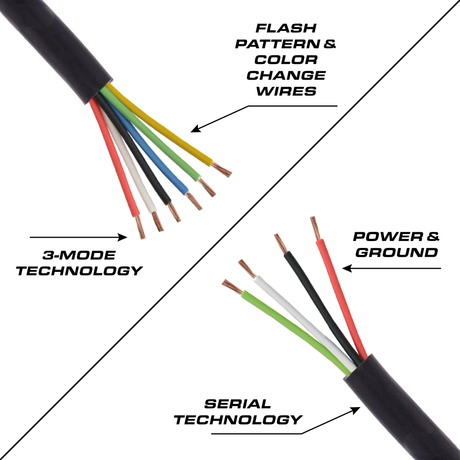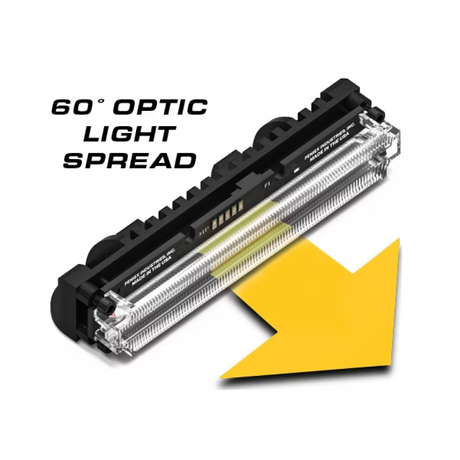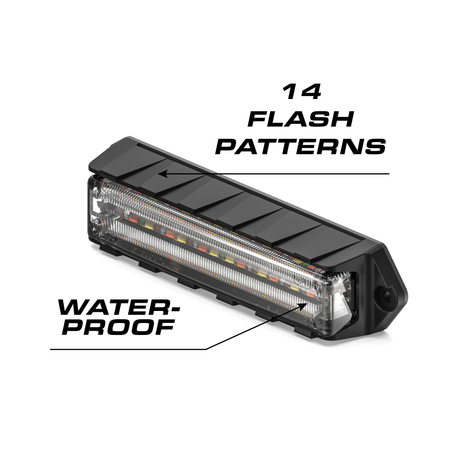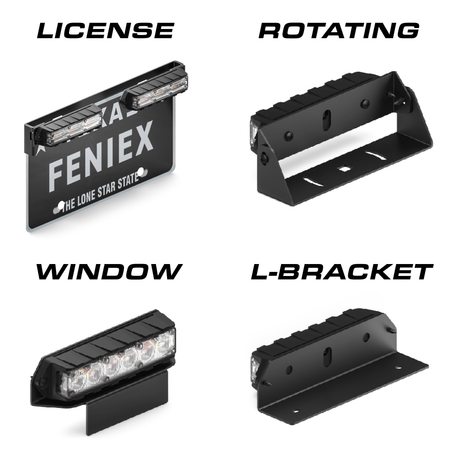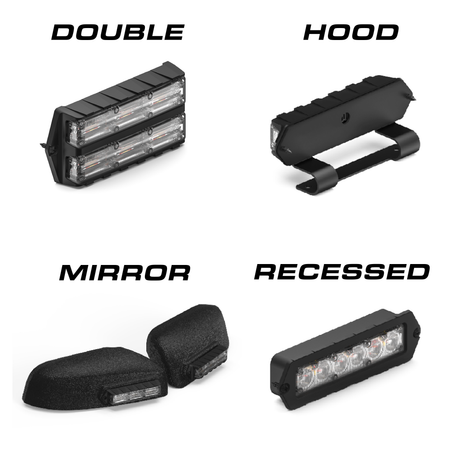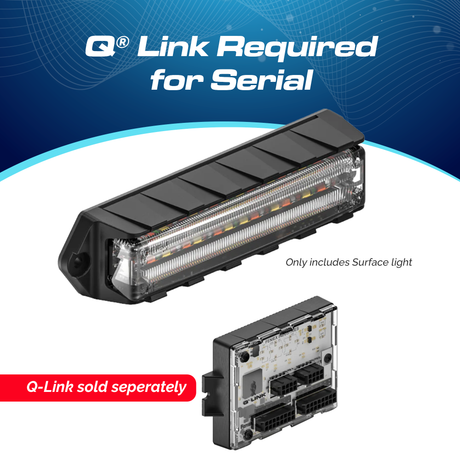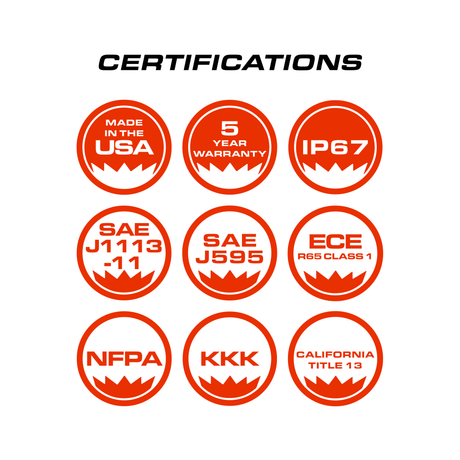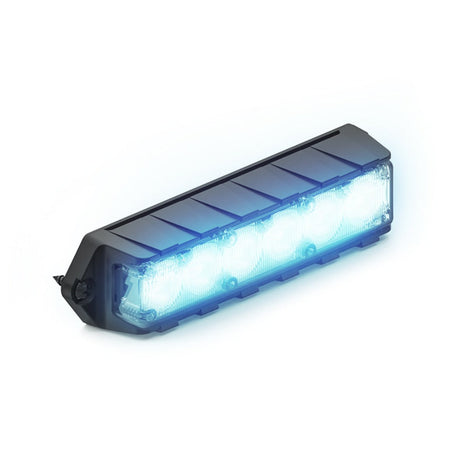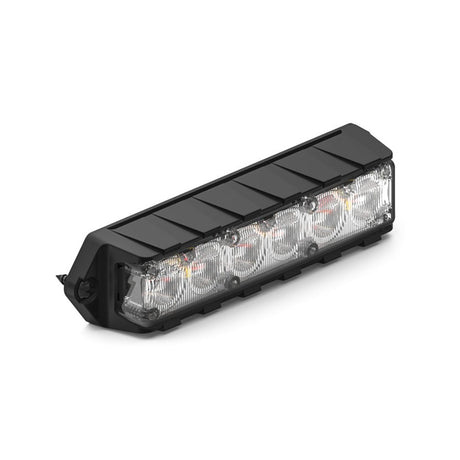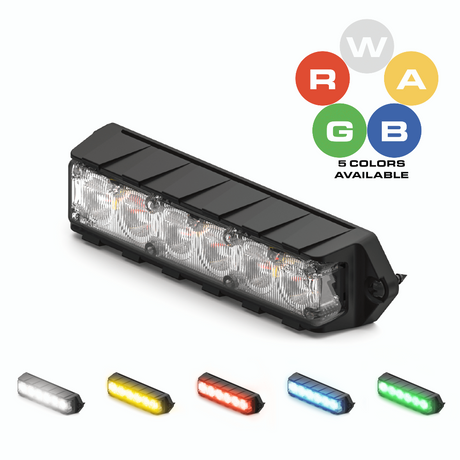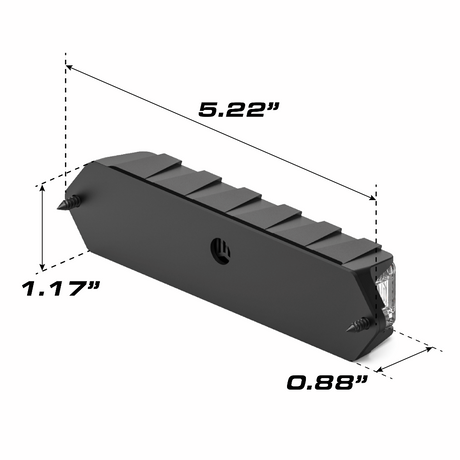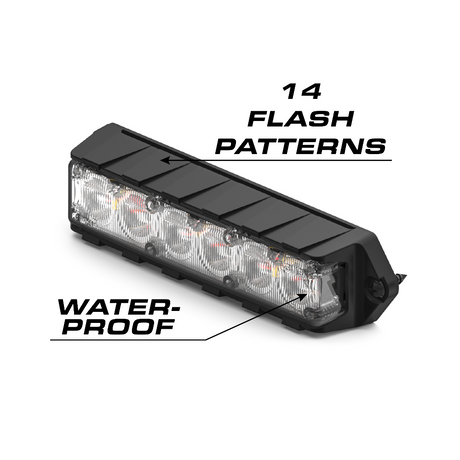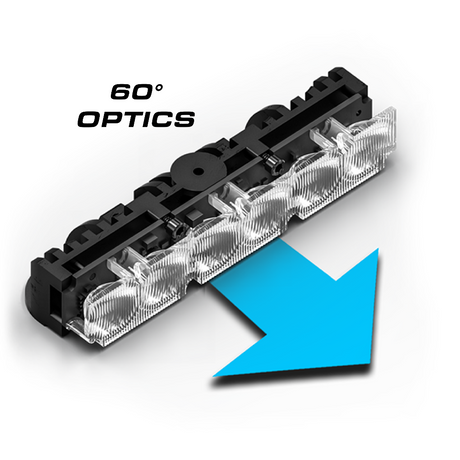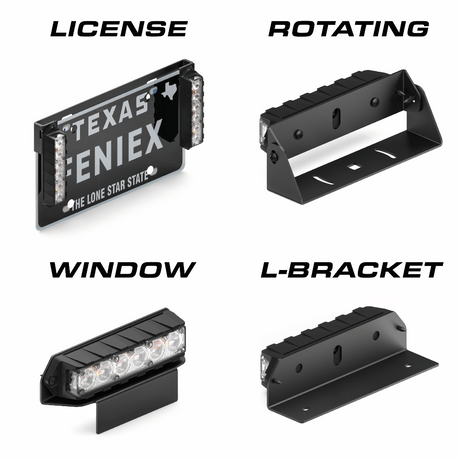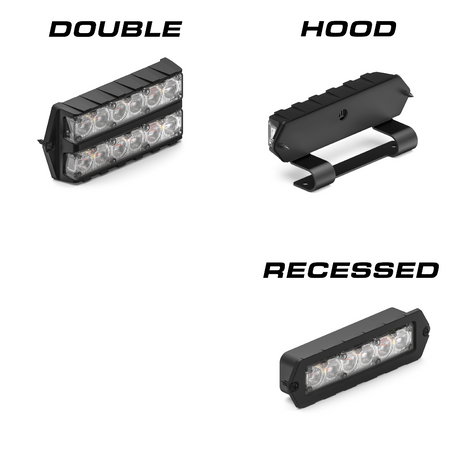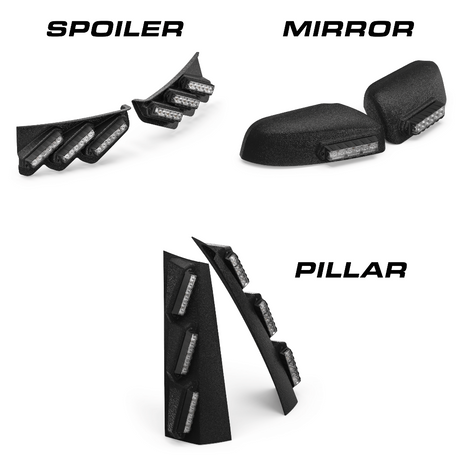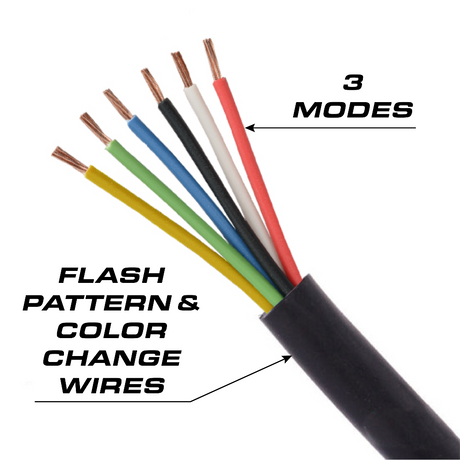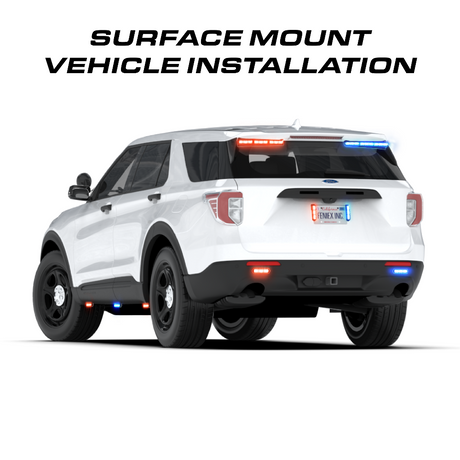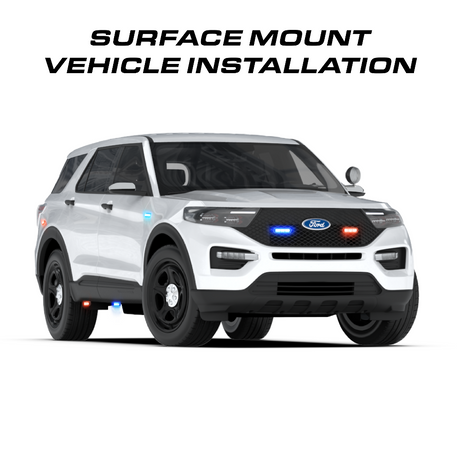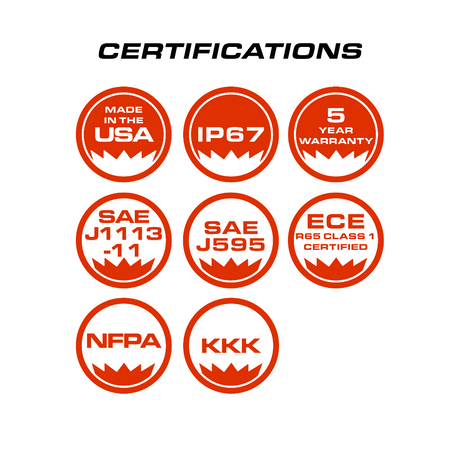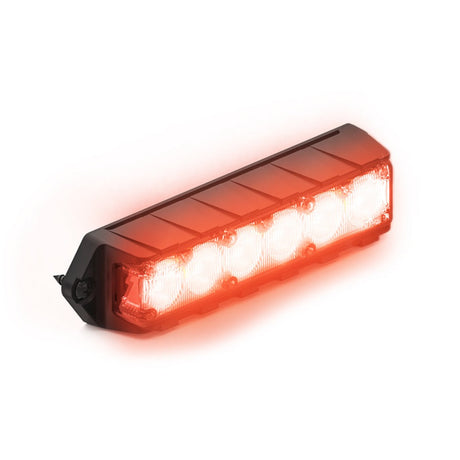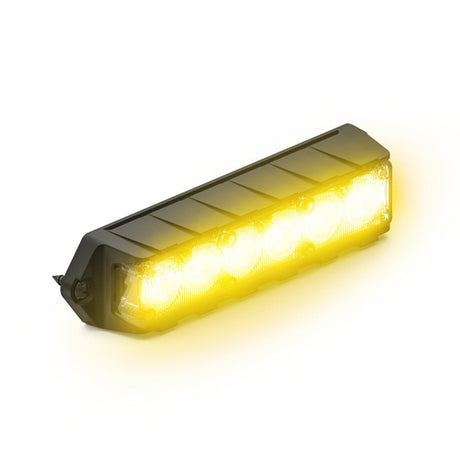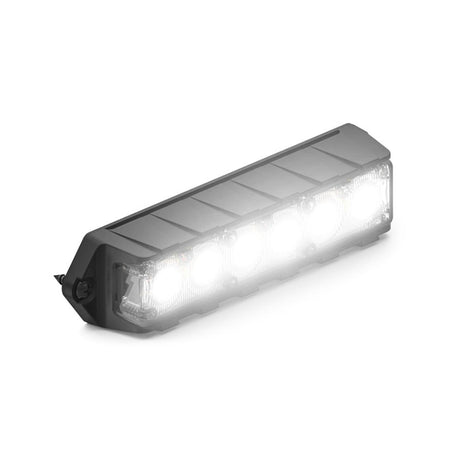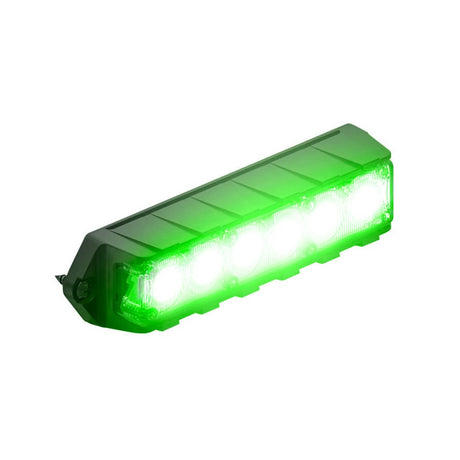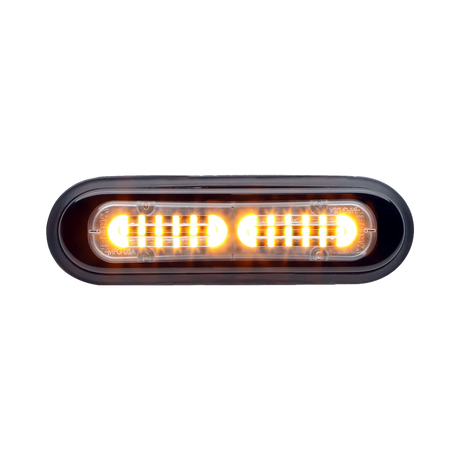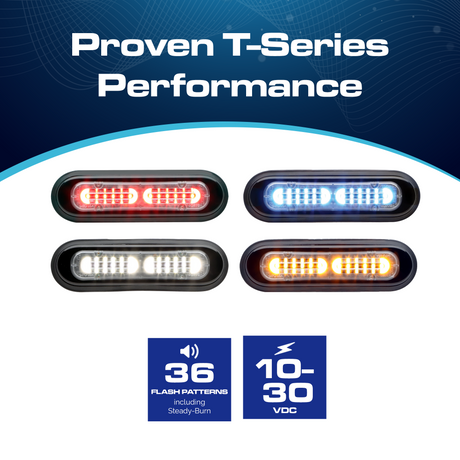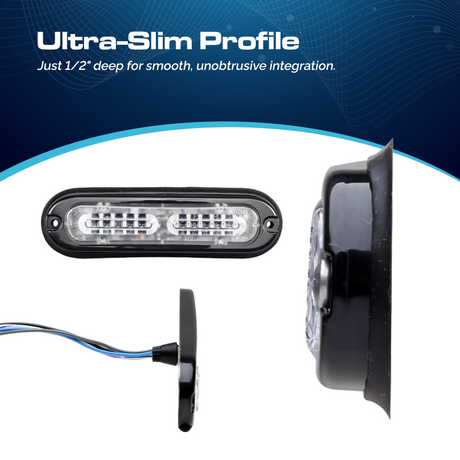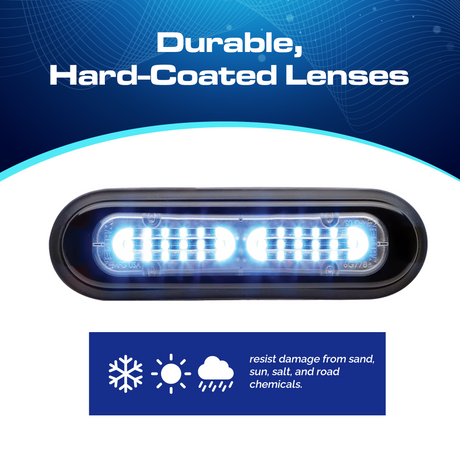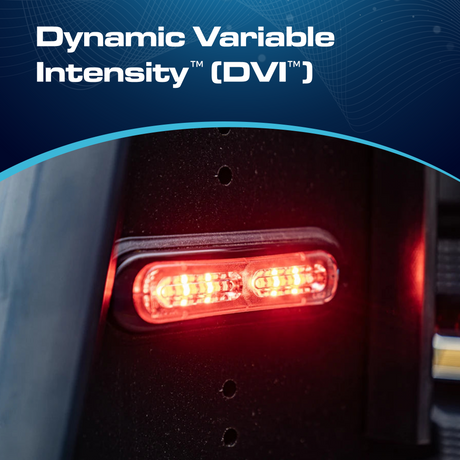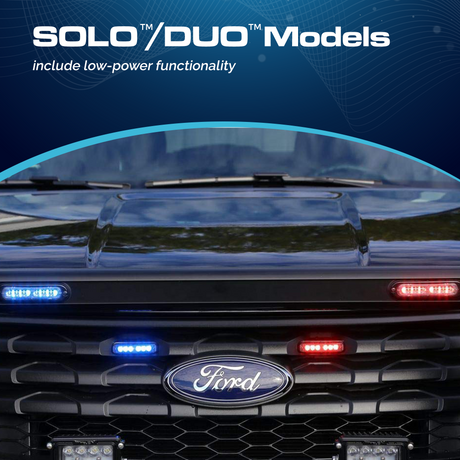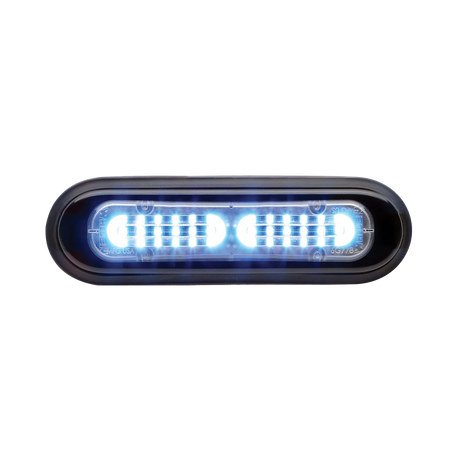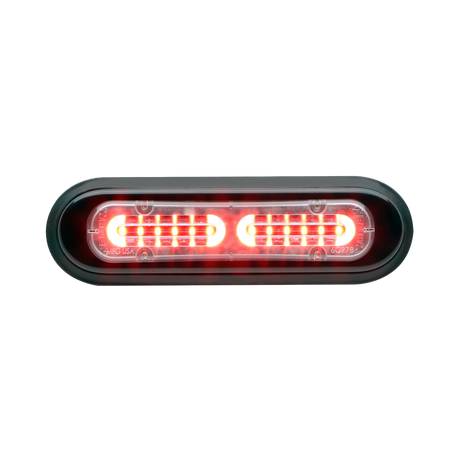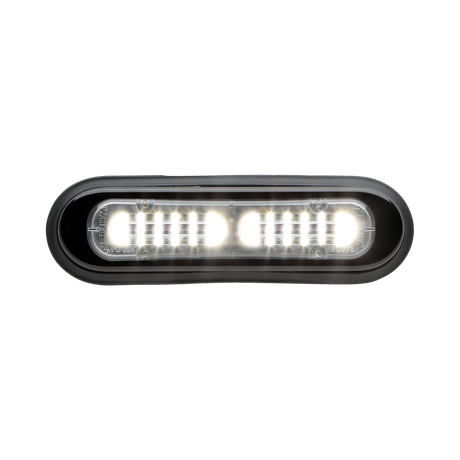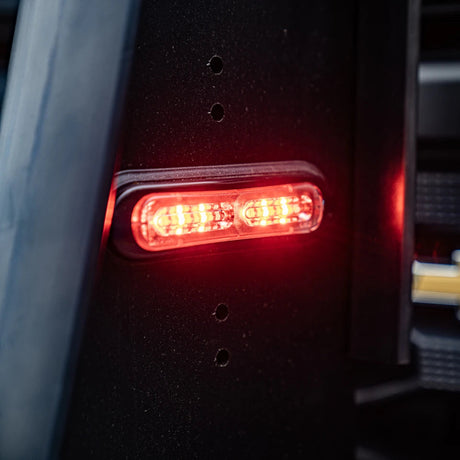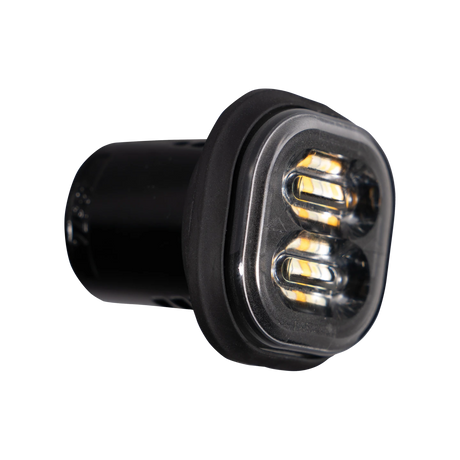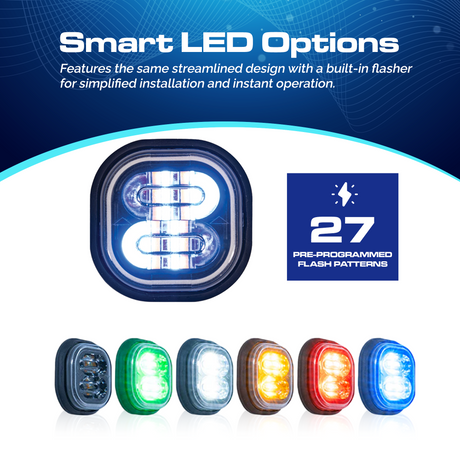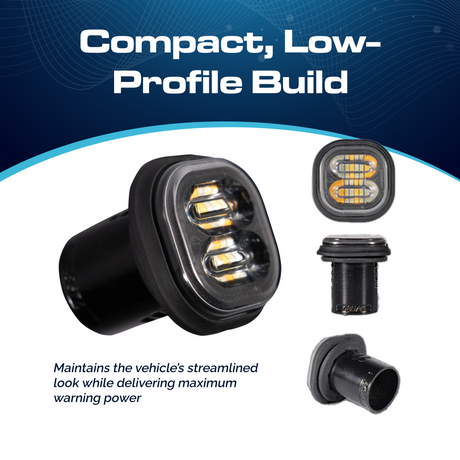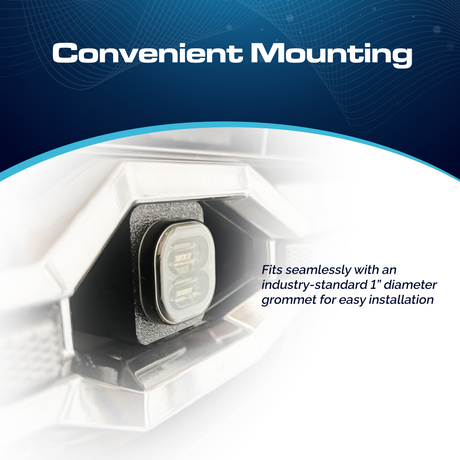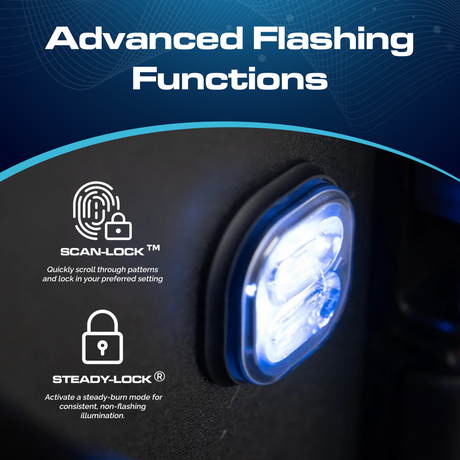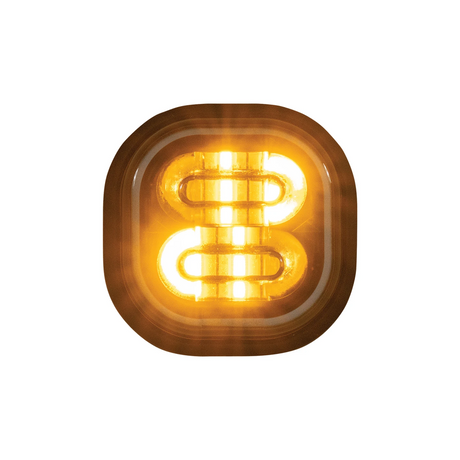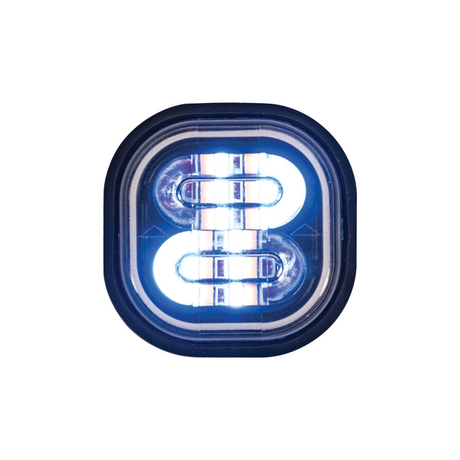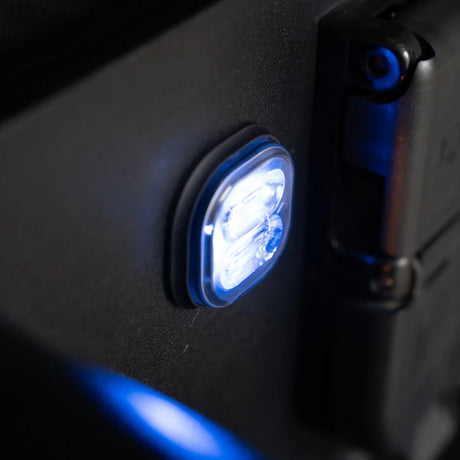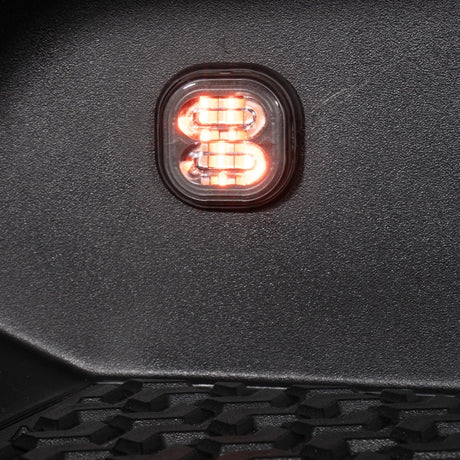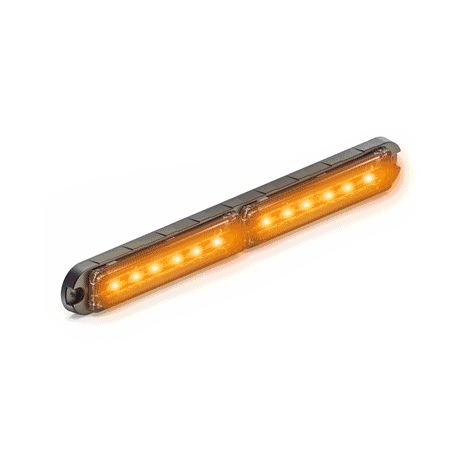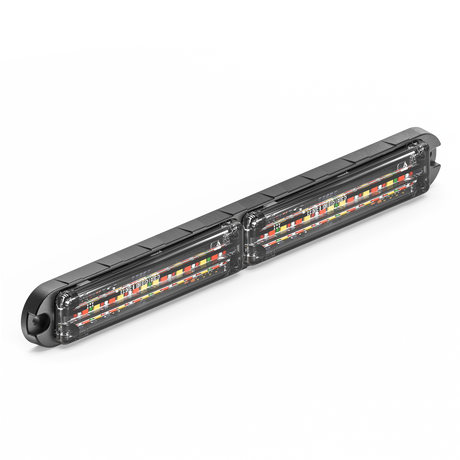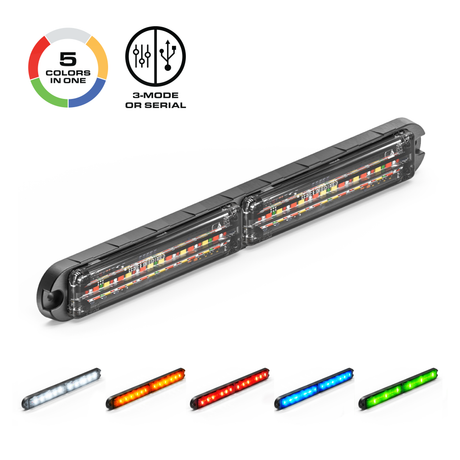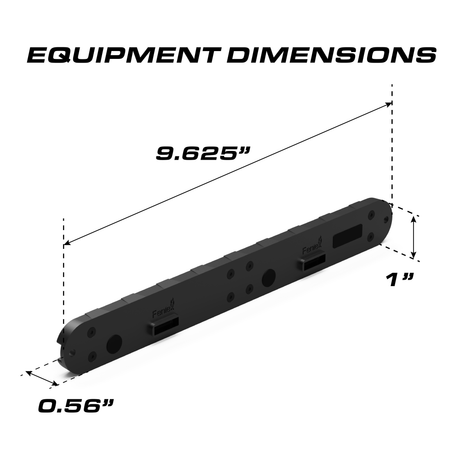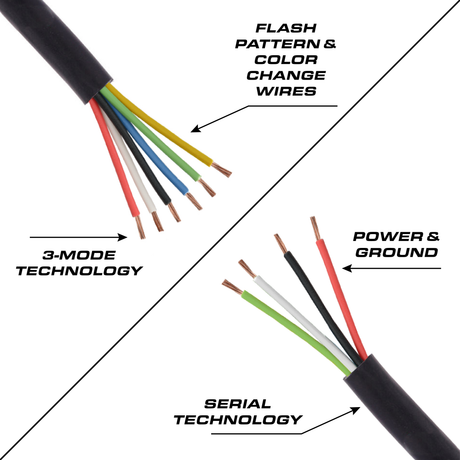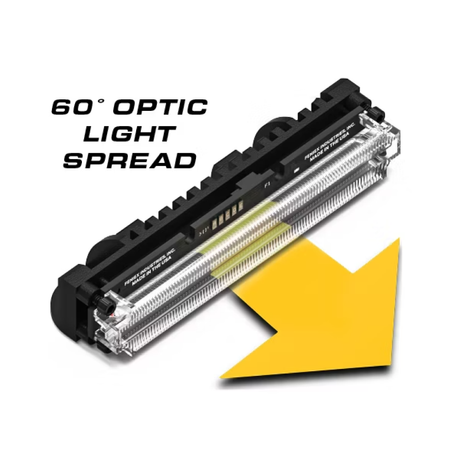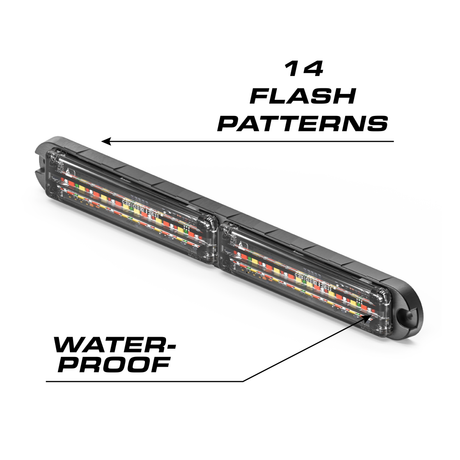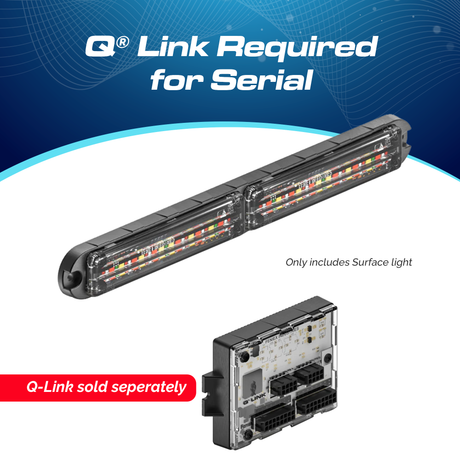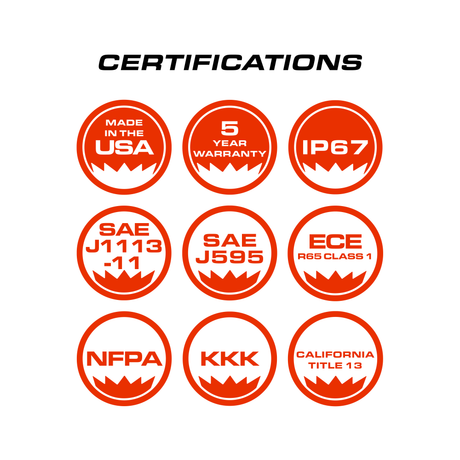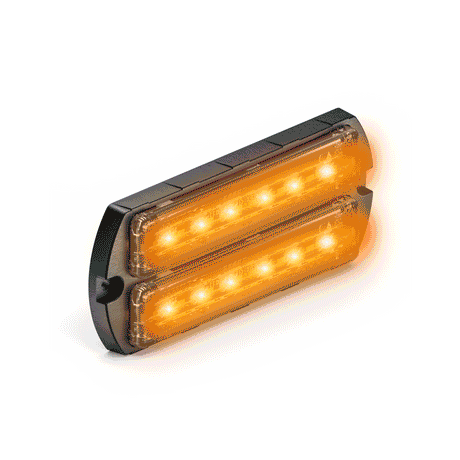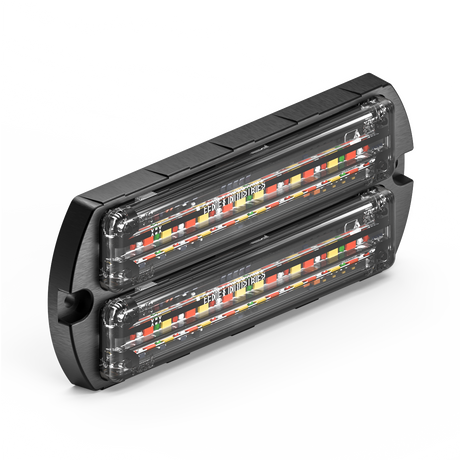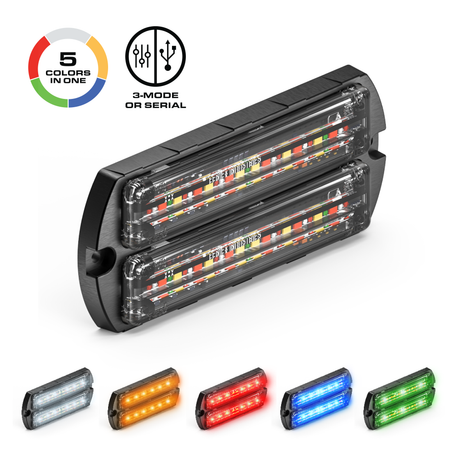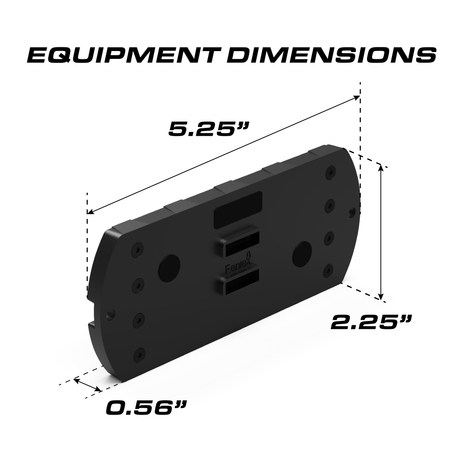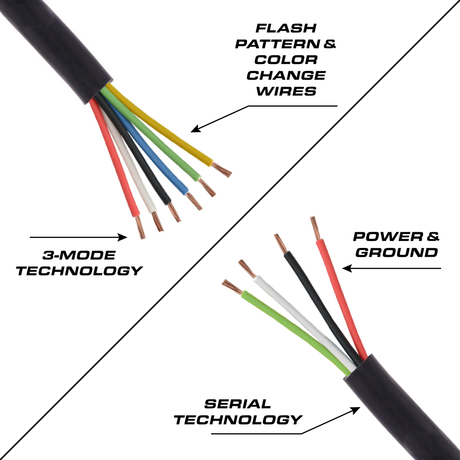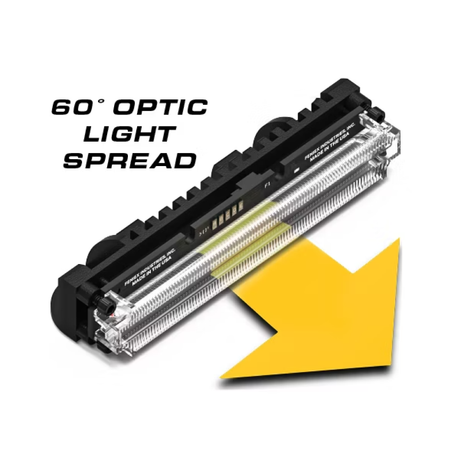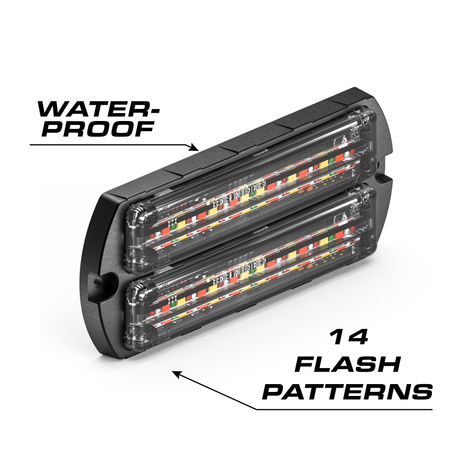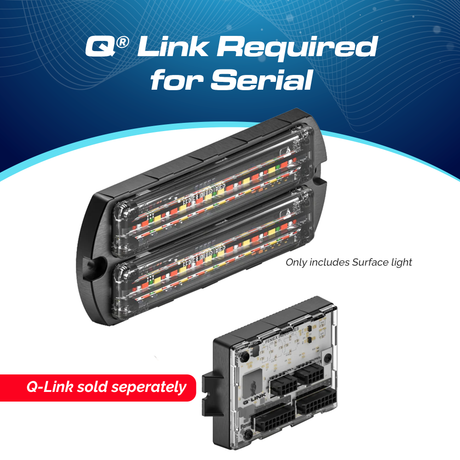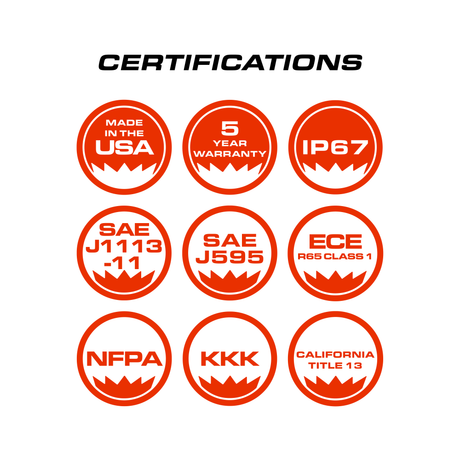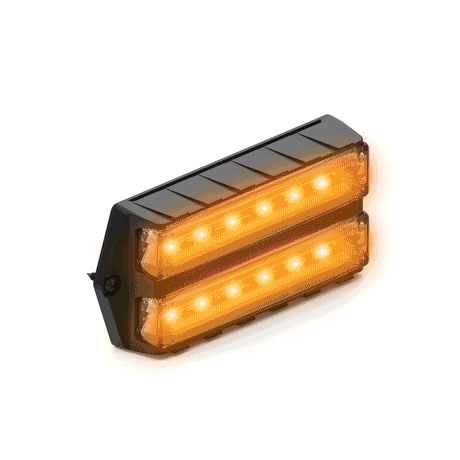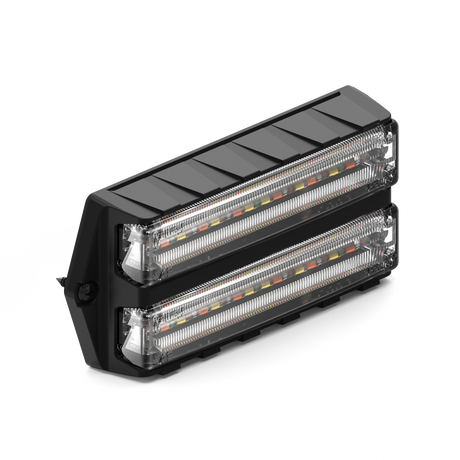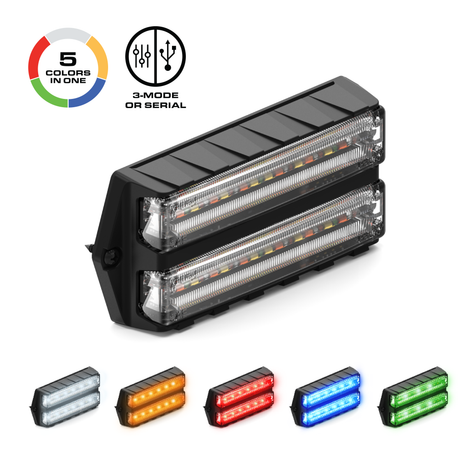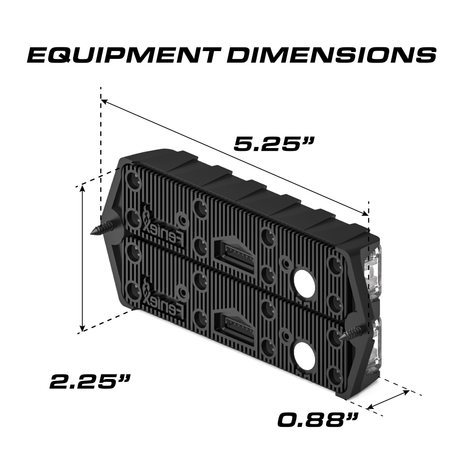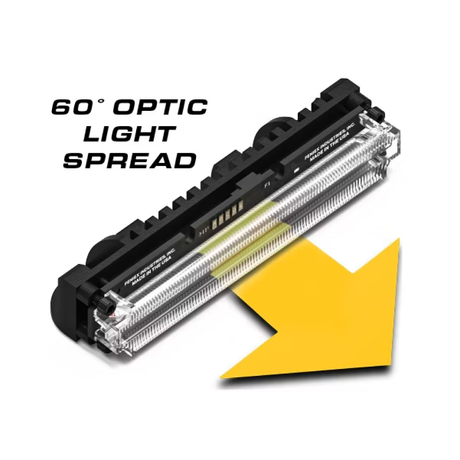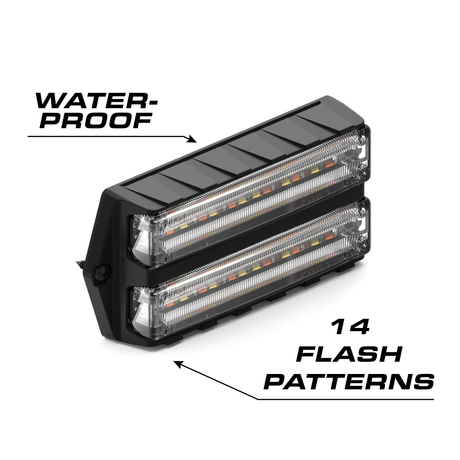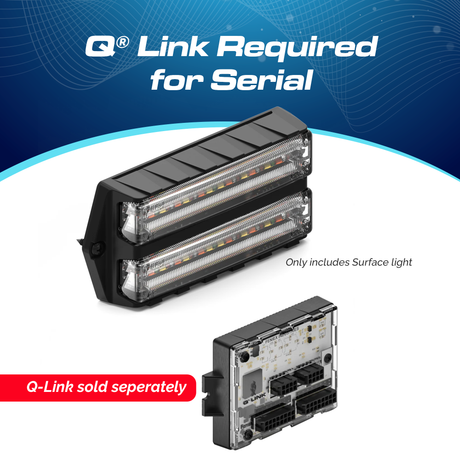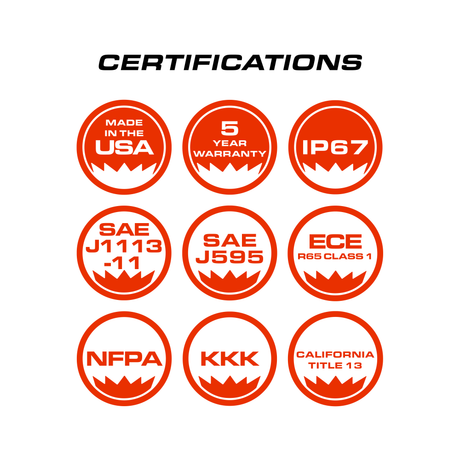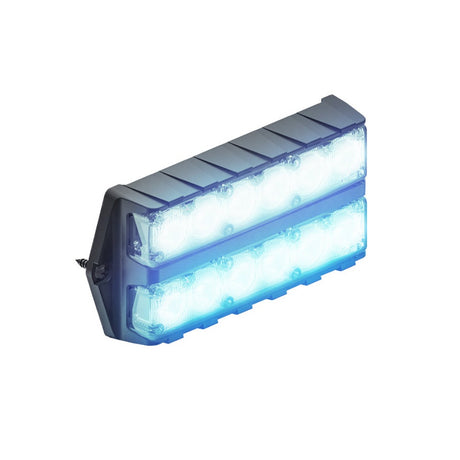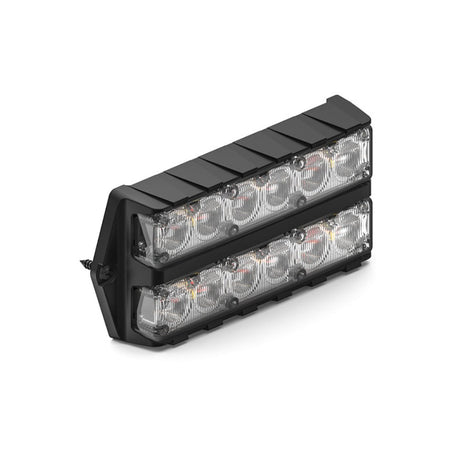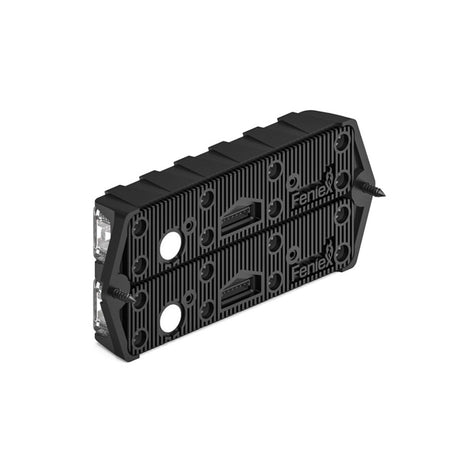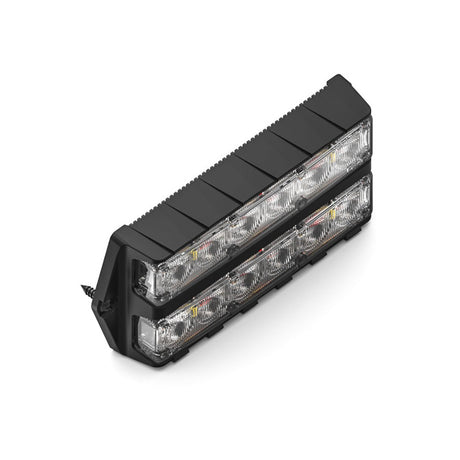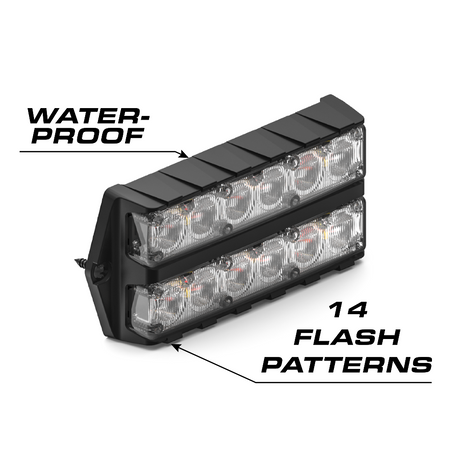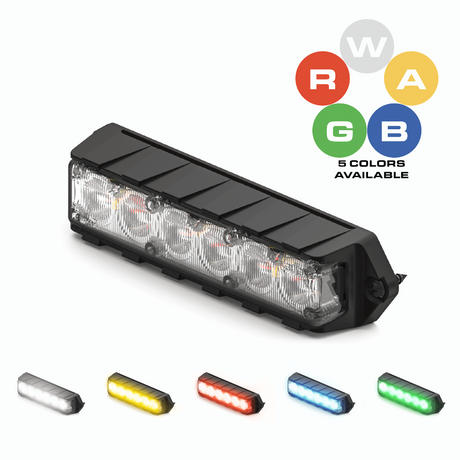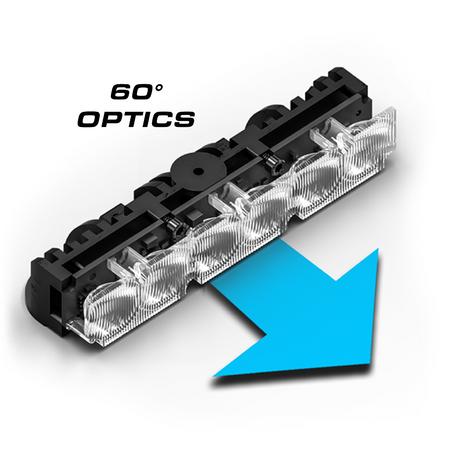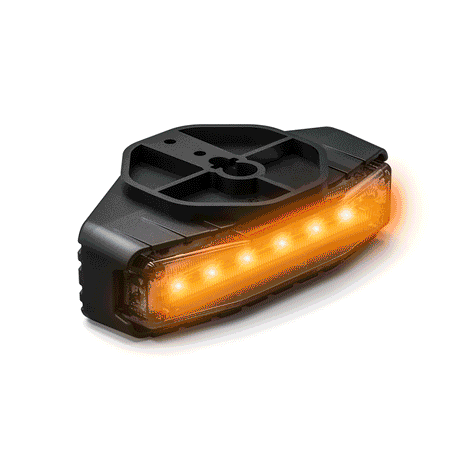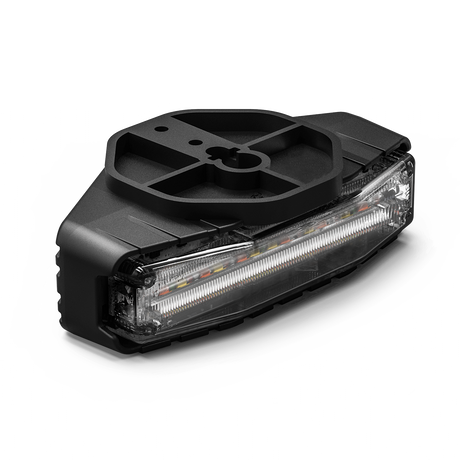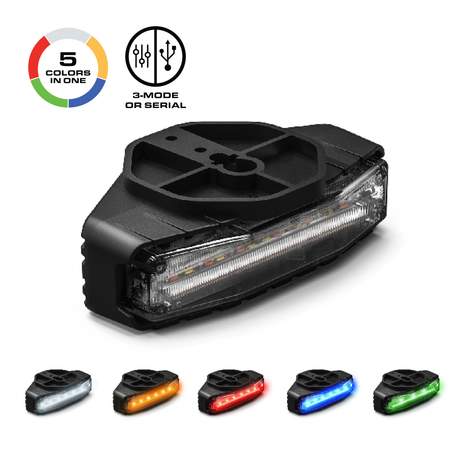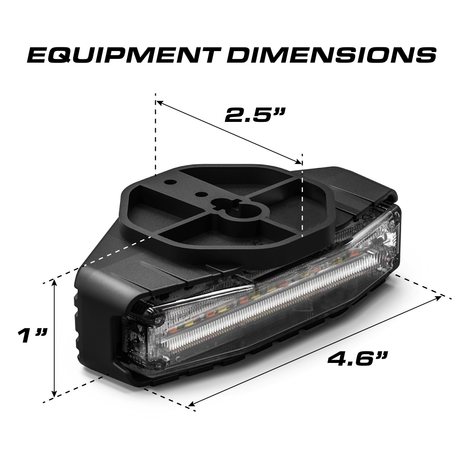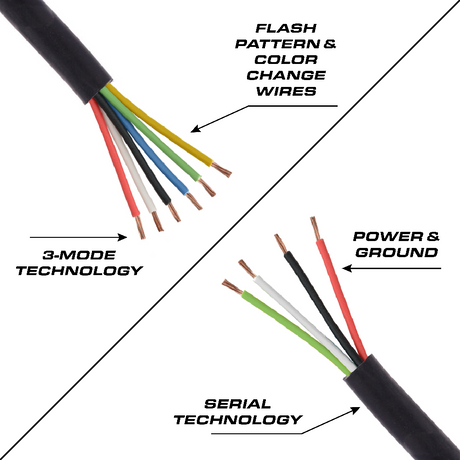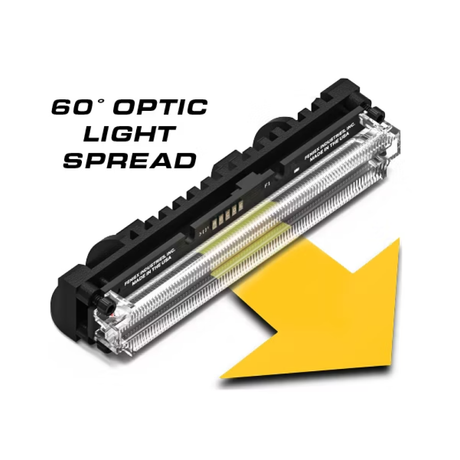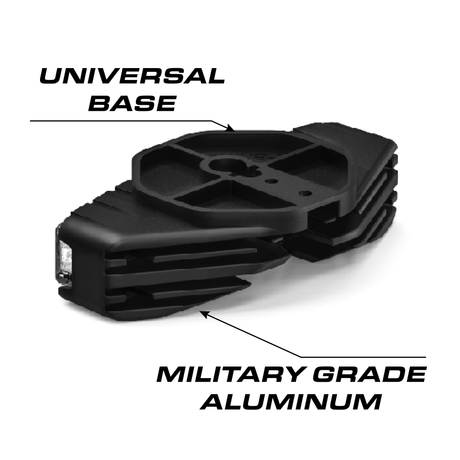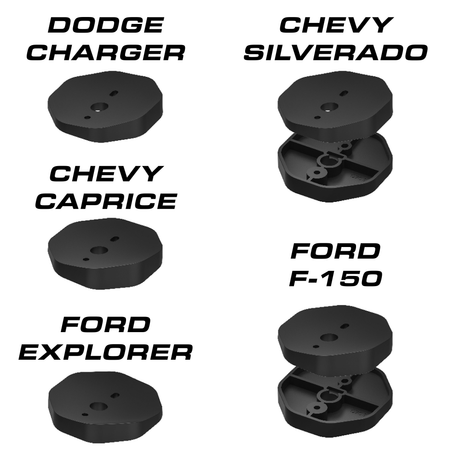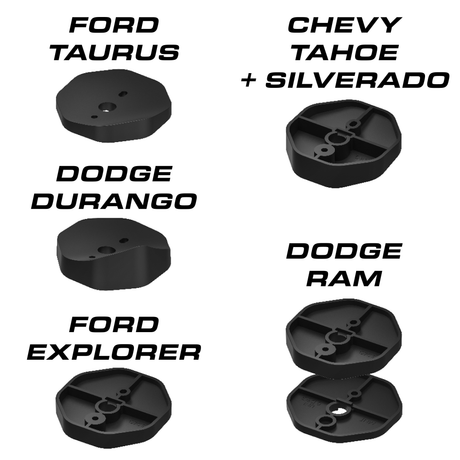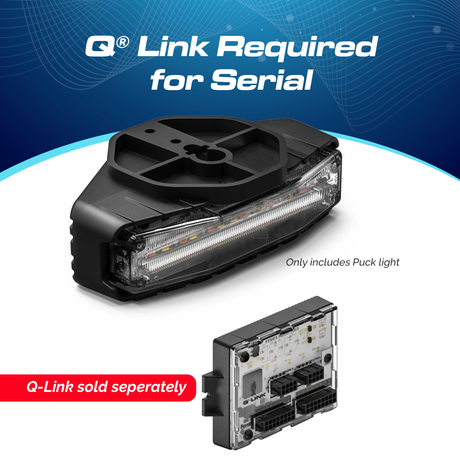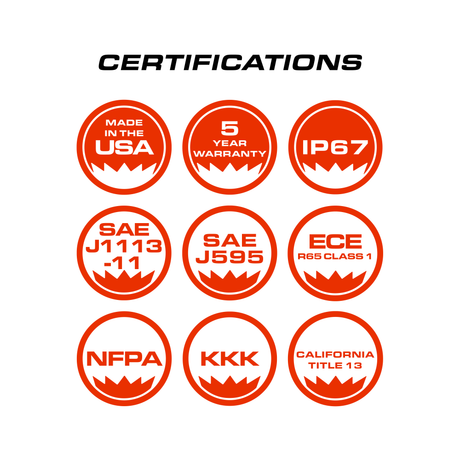LED Grille Lights & LED Surface Mount Lights
LED Grille lights and surface mount lights are a simple but powerful way to upgrade your vehicle’s lighting system. Featuring a variety of shapes, sizes, color combinations, and flash patterns, our surface mounts and grille lights are perfect for first-time users, seasoned enthusiasts, and first responders.
Surface mounted strobe lights offer endless installation possibilities: they’re slim, compact, bright, and incredibly convenient.
- Featured
- Best selling
- Alphabetically, A-Z
- Alphabetically, Z-A
- Price, low to high
- Price, high to low
- Date, old to new
- Date, new to old
FiltersFilter & Sort
UBL Electronics
UBL U-Lite Surface Mount LED Grille Light
★★★★★(13)Regular price From $34.99Unit price /UnavailableFeniex
Feniex Q Series Flat Surface Mount LED Grille Light
★★★★★(3)Regular price $109.99Unit price /UnavailableFeniex
Feniex T3 Surface Mount Grille Light
★★★★★(16)Regular price $39.99Unit price /UnavailableUBL Electronics
UBL G3 Surface Mount LED Grille Light
★★★★★(3)Regular price $29.99Unit price /UnavailableFeniex
Feniex Quad Q3 Surface Mount LED Grille Light
★★★★★(14)Regular price $49.99Unit price /UnavailableFeniex
Feniex Q Series Surface Mount LED Grille Light
★★★★★(2)Regular price $109.99Unit price /UnavailableWhelen
Whelen ION T-Series Surface Mount Grille Light
Regular price From $139.99Unit price /UnavailableFeniex
Feniex Q Series Flat Wide Surface Mount LED Grille Light
Regular price $219.99Unit price /UnavailableFeniex
Feniex Q Series Flat Dual Surface Mount LED Grille Light
Regular price $219.99Unit price /UnavailableFeniex
Feniex Q Series Dual Surface Mount LED Grille Light
Regular price $219.99Unit price /Unavailable
Why LED Grille Lights And LED Surface Mount Lights Matter
LED Grille lights and surface mount LED lights are far more than just a flashy accessory. Whether you’re enhancing a car, upgrading a truck, or outfitting an emergency vehicle, these powerful lights play a vital role in safety, functionality, and style. Positioned at the front of your ride—often behind a mesh grille or on a custom bumper—LED lights serve as a highly visible warning signal, ensuring that other drivers take notice in critical situations. Meanwhile, they can also add a sleek, modern touch to your vehicle’s appearance.
For first responders, blue or red grille lights can provide an indispensable level of visibility when rushing to a scene. Construction crews and tow trucks often rely on amber strobe setups to alert fellow motorists, while off-road enthusiasts might opt for white or multi-color configurations to light the path ahead or simply make a bold statement. Even for everyday drivers, a well-chosen set of LED grille lights or surface mount lights improves on-road safety, keeping you and your passengers more secure in low-visibility conditions.
In this expanded guide below, we’ll explore everything you need to know about LED grille lights and surface mount lights: from selecting the right fit for a Ford F150, F250, Mustang, and more, to understanding various mounting methods for a Dodge, Toyota Tundra, and beyond. We’ll even tackle the basics of wiring and long-term maintenance.
In this expanded guide below, we’ll explore everything you need to know about LED grille lights and surface mount lights: from selecting the right fit for a Ford F150, F250, Mustang, and more, to understanding various mounting methods for a Dodge, Toyota Tundra, and beyond. We’ll even tackle the basics of wiring and long-term maintenance.
LED Grille Lights vs. LED Surface Mount Lights
The terms are mostly interchangeable — it’s actually not really a versus situation. Surface mounts and grille lights are identical in functionality, but they differ in regards to their placement and application, so what’s better for you depends on where you want the light placed on your vehicle. As the name implies, grille lights can be mounted in the grille-area of your vehicle. They enhance your visibility and ensure that you’re seen by nearby and oncoming traffic.Surface mount LED lights are extremely versatile and can be mounted almost anywhere on your car, truck, or service vehicle. They can be installed strategically to maximize visibility from different angles and perspectives, or remain hidden and concealed for undercover use.
Mounting LED Grille & Surface Mount Lights on an Emergency Vehicle
Using any of our compatible mounting brackets, like the appropriate L bracket or swivel bracket, you can quickly and easily mount your LED warning lights on a variety of grilles. You can even use a stainless steel machine bolt or stainless steel screw and mount it directly to the front of your vehicle’s grille. To install a light around your license plate, you can use a license plate bracket for mounting (in the case of surface mount lights).
Can LED Grille Lights or Surface Mounted LED Lights Damage My Vehicle?
Our LED surface mounts and grille lights are incredibly easy to install, but keep in mind that you will need to drill a hole on the surface of your desired mounting location to pass the wires through and install your light.
As a preventative measure, we sell our LED grille and surface mount lights with a rubber or foam gasket to protect the mounting surface from getting scratched. Over time, sand, dirt, and other particles build up behind the light and eventually scratch your vehicle’s surface—the protective gasket will prevent this from happening!
What Are Surface Mount/Grille LED Lights?
As the name suggests, surface mount LED lights (sometimes called LED grille lights) are designed to be mounted on the exterior of a vehicle or used in the interior of your vehicle. Most models come with a built-in flange or bracket that makes it easy to install the light in a number of different locations.
While they’re often used as emergency vehicle lights, surface mounts can also be used for a variety of other applications, including tow trucks, snow plows, security vehicles, utility trucks, and more.
What Are Flush Mount LED Lights?
Flush mount LED lights are very similar to surface mounts, but they’re designed to be installed flush with the surface of your vehicle (hence the name). The “flush” look of these LEDs is achieved with the use of a recessed mount bracket for a sleek, low-profile look that’s perfect for cars and trucks that want to avoid calling attention to their lighting system.
Pro tip: when looking at surface mount LED lights, LED grille lights, and flush mount LED lights, know you’re looking at the same type of lights — the name differs depending on the placement of the lights on your vehicle.
Applications of Grille and Surface Mount LED Warning Lights
Grille and surface mount LED lights can be used for a variety of different applications, including:
Emergency Vehicle Lighting
Surface mounts (and LED grille lights) are often used as emergency vehicle lights, thanks to their bright, attention-grabbing light output.
Tow Truck Lighting
Tow trucks need to be highly visible when they’re on the road, and these types of vehicle lighting solutions are a great way to achieve this.
Construction Vehicle Lighting
Construction vehicles often need to be equipped with warning lights, and surface mounts/grille lights are a popular choice for this application.
Why Use LED Surface Mount & Grille Emergency Lights
LED grille and surface mounted lights are one of the most popular choices for emergency vehicles for several reasons.
Versatile Installation
Grille and surface mount LED lights offer a wide range of installation possibilities. They can be mounted on the grille, on the roof, on the bumper, or even in the wheel well.
Compact and Convenient
Incredibly compact, these lights don’t take up much space on your vehicle, making them perfect for emergency personnel. LEDs also last much longer than traditional bulbs, meaning you won’t have to replace them as often.
Greater Visibility
Surface mounted lights are extremely bright and visible, making them perfect for emergency situations where visibility is paramount.
Where to Install Perimeter Mount Lights
LED perimeter mount lights, or perimeter warning lights, are typically used for fire trucks and ambulances or other vehicles requiring external lighting. We recommend the Lux series lights from Feniex as a great option for your retro-fit, upgrade, or new-build. Again, in this case, perimeter mount led lights for vehicles is an interchangeable term with LED grille lights or LED surface mount lights — the terms largely depend on the placement.
Get Your LED Grille and Surface Mounted Lights From Ultra Bright Lightz
LED Grille and surface mount lights are a great choice for emergency vehicles. They offer a versatile installation, are compact and convenient, provide great visibility, and are very durable. Be sure to check out our selection. We offer a wide variety of surface mount lights, including LED grille lights, perimeter mounts, and more!
Contact the UBL team with any questions and we’ll be happy to help you find the right lights for your vehicle and situation!
Vehicle-Specific Fit and Style for LED Grille Lights
Choosing the right LED grille light or surface mount lights isn’t just about brightness and color—it’s also about fit. Different makes and models require unique mounting brackets, grille designs, and wiring configurations. Whether you’re working with a Ford F150, Chevy Silverado, or even a Toyota Tundra, understanding the nuances (inside and out) of each vehicle type ensures both a secure installation and a stylish, factory-like appearance.
Below, we’ll walk you through a few popular vehicle makes and models, helping you best understand how to outfit them with LED grille lights. If you’re looking for specific installation tips on surface mount lights, scroll down on this page or Control+F (or Command+F on a Mac) and search for “surface mount lights for vehicles”.
Ford Family (F150, F250, F350, Bronco, Super Duty)
Ford Family (F150, F250, F350, Bronco, Super Duty)
- Many Ford trucks, from the F150 to F350, come with distinctive grille shapes—some featuring mesh inserts or raptor-style front ends.
- Upgrading to LED grille lights complements the super duty build of these trucks without eclipsing their style (in fact, they enhance it), offering both a modern style boost and enhanced visibility.
- The Bronco and F250 often feature broader front grilles that can accommodate additional strobe or off-road lighting for adventurous outings.
Installation Tips
- Ensure you have the right brackets or mounting hardware for your specific model year (e.g., 2014, 2015, 2016, etc.).
- Check for pre-drilled slots or manufacturer-provided mounting points.
- If you prefer a stealth look, consider behind-the-grille or undercover mounting methods.
Chevrolet / GMC (Silverado, Tahoe, 2500/3500 HD)
Heavy-Duty Illumination
- The Chevy Silverado and GMC 2500/3500 HD series are known for their rugged front ends, often ideal for multiple LED light bars or smaller surface mounts around the bumper.
- For a sleek style, look into custom grille inserts that match your truck’s lines while providing space for your LED lights.
Installation Tips
- Some models might require removing the entire grille assembly to securely install lights and properly route wiring.
- Consider whether you want additional front markers around the headlights or a single row of LEDs in the primary grille area.
Dodge / Ram (1500, 2500, 3500)
Balancing Form and Function
- Dodge Ram trucks offer a bold grille design that pairs well with amber or white LED lights, especially for work or off-road applications.
- If you own a 2017 or 2018 Ram 1500, pay attention to how the grille and bumper contours can affect the angle of your mounted lights.
Installation Tips
- For Ram 2500 or 3500, confirm whether your truck has active grille shutters, which can influence how you mount lights behind the grille.
- Be mindful of any sensors or cameras (e.g., forward-collision sensors), so you don’t block them with new lighting.
Toyota (Tacoma, Tundra, Corolla)
Diverse Styles, Rugged Appeal
- From the compact Tacoma to the full-size Tundra, Toyota trucks are popular choices for both daily drivers and weekend warriors.
- Tundra owners often opt for a raptor or mesh-style grille replacement, allowing LED accents to shine through in a dramatic fashion.
- Even smaller vehicles like the Corolla can benefit from custom LED grille lights for an unexpected yet eye-catching look.
Installation Tips
- Many 2019 and newer Toyota models include advanced safety systems—double-check for sensors near the grille.
- For a cohesive style, coordinate your grille lights with other accessory lighting (e.g., fog lights or DRLs).
Jeep (Wrangler, Gladiator)
Off-Road Icons
- The Jeep Wrangler and Gladiator are built for adventure, and adding off-road LEDs or strobe lights to the grille delivers both function and flair.
- Many Jeep owners pair an “angry” grille design with halo headlights and grille-mounted LED bars to complete the rugged look.
Installation Tips
- Consider using modular lighting pods or low-profile surface mounts that won’t restrict airflow to the radiator.
- Check your local regulations if you plan to run blue, red, or other emergency-style colors on public roads.
Other Makes & Models (BMW, Mustang, Camaro, etc.)
Custom Performance & Showroom Shine
- For performance cars like the Mustang or Camaro, slim LED grille accents can add a racing-inspired edge.
- BMW owners often install LED marker lights to enhance that signature kidney grille design while making the vehicle more visible at night.
Installation Tips
- Certain sports cars and sedans have limited space behind the grille; look for ultra-slim surface mounts or grills designed specifically for smaller openings.
- Always ensure your upgraded lights align with local laws regarding brightness and color usage on standard passenger cars.
Final Thoughts on Vehicle-Specific Fits for LED Grille Lights
From 2014-era F150 builds to 2019 Ram 2500 setups, taking the time to research your truck’s or car’s grille design and mounting points guarantees a cleaner, more professional look. By matching your vehicle’s make, model, and style with the right LED grille lights, you’ll elevate not just your visibility, but your overall road presence—whether you’re hauling across the rough country or just cruising around town.
LED Grille Light & Surface Mount Technology – TIR, Strobe, and More
Not all LED grille lights are created equal. Whether you’re browsing for LED grille lights with F150 compatibility or seeking a TIR mount emergency setup for your Toyota Tundra with a front accent vent , it’s essential to understand the technology behind these products. Different LED optics and flashing features can dramatically change both performance and appearance. It can feel a bit like a grand undertaking, but the team at Ultra Bright Lightz is here to help.
1. TIR vs. Linear Optics
- TIR (Total Internal Reflection): TIR lights use an internal reflector to focus the beam, providing a sharper, more intense burst of illumination. They’re great for undercover or hidden placements behind a mesh grille, especially if you want a more directional flash.
- Linear Optics: Instead of a tight beam, linear setups spread the LED output across a wider area. This can be ideal if you need to light up a broader portion of the road or want an attention-grabbing glow that fills your front bumper.
Pro Tip: If you’re installing LED grille lights with linear bars, consider pairing TIR units on the corners for focused bursts, and linear models in the center for broader coverage.
2. Strobe & Flash Patterns
- Single-Color vs. Multi-Color: Some strobe lights flash in red, blue, white, or amber exclusively, while others feature dual or quad color modes (e.g., red/white or blue/amber).
- Preset Patterns: Many brands, like Feniex and Whelen, offer built-in flash sequences ranging from steady burn to complex multi-phase strobes.
- Custom Controllers: If you’re aiming for a truly unique setup—like a quad strobe for pattern behind the grille—look for controllers or modules that allow you to switch between patterns on the fly.
Pro Tip: A simple plug-and-play kit can help you get a dramatic flashing effect without complicated wiring. Be sure your chosen pattern is legal in your area, as some colors (like blue and red) may have restrictions for civilian vehicles.
3. Lens & Housing Options
- Smoked Lens: A popular choice for show cars or those who want a subtle, “blacked-out” appearance. This type of LED grille lights are often paired with sleek bumper inserts on vehicles like — though, certainly not limited to — the Jeep Wrangler or Camaro.
- Flush or Surface Mount: If you prefer a discreet look, a flush mount can keep the light nearly level with the grille or bumper surface. Surface mount lights, on the other hand, protrude slightly but generally have simpler installations.
- Weatherproof Housing: Whether you’re off-roading in your Tacoma or commuting in an everyday sedan, a durable, sealed housing is crucial. Look for IP67 or IP68 ratings for water and dust resistance.
4. Balancing Performance & Aesthetics
- Undercover vs. Showy: Some vehicle owners prefer minimalistic hidden lighting, especially for daily drivers or volunteer responders. Others want all-out flash, like raptor-style accent lights or a custom DRL conversion on a Bronco.
- Color Coordination: Matching your grille light colors to factory accents (e.g., white DRLs or amber turn signals) can create a cohesive look. If you’re going for a more flashy or intense look — which pairs nicely with a Jeep’s grille — for an off-road adventure, consider contrasting or multi-color strobes.
By understanding the core technology—TIR vs. linear optics, various strobe modes, and the array of lens/housing options—you can better select a system that meets your performance needs, style preferences, and compliance requirements. Whether you want a diy kit or a full professional setup, today’s market offers endless ways to stand out and stay safe on the road.
Installation & Wiring Essentials
Installing LED grille lights and surface mounts can be a straightforward DIY project—or it can become complex if you don’t have the proper planning, tools, and know-how. Whether you’re outfitting an F150 or adding a discreet set of flush-mounted strobes to a Corolla, following a clear plan is key. Below, we’ll cover the essentials of preparing, mounting, and wiring these lights, so you can get the job done safely and effectively.
1. Pre-Installation Planning
1. Gather Your Tools & Kits
- You’ll typically need wire strippers, crimpers, drill bits, and a basic installation or wiring diagram—especially if you plan to incorporate a controller.
- Double-check that you have the right hardware (e.g., L brackets, gaskets) for the exact type of LED grille lights you’re installing—many brands (such as Feniex) include mounting accessories in the box.
2. Identify Mounting Locations
- For undercover or stealthy setups, consider placing lights behind the grille mesh or near the deck of the bumper.
- Larger trucks—like super duty models—often have ample room for dual or even triple arrays of LED lights along the front end.
2. Mounting Best Practices
1. Surface vs. Flush Mount
- LED surface mount lights fasten directly onto the exterior panel or grille, often with a foam gasket to protect your paint.
- Flush mounts require cutting an opening in the panel so the LED housing sits nearly level with the vehicle’s surface, providing a sleek, low-profile look.
2. Securing the Lights
- Use stainless steel screws or machine bolts to prevent rust.
- If you’re upgrading a slightly older truck, like a 2014 or 2015 Silverado, you may need additional brackets to accommodate new-generation LED units.
3. Wiring & Electrical Setup
1. Reference a Diagram
- Most reputable brands provide a wiring diagram that shows how to route power, ground, and control wires.
- If you’re combining multiple LED grille lights and surface mounts, confirm whether each needs its own fuse or if they can share a circuit.
2. Power & Switches
- Many dual-color or multi-mode lights have extra wires for pattern selection. Label these carefully to avoid confusion later.
- Consider a dedicated switch panel or relay for controlling all your LED lights from one convenient location.
3. Fuse & Relay Basics
- Always protect your setup with the appropriate fuse rating. Overloading the circuit can result in faulty operation or damage to the lights.
- Use automotive-grade wiring to handle the current draw, and ensure all connections are crimped and heat-shrunk for durability.
4. Testing & Final Checks
1. Function Test
- Before reattaching body panels or finalizing mounting bolts, test your LED grille lights and surface mount lights to confirm they illuminate correctly and flash in the desired pattern.
- Cycle through any strobe or color-change modes if your lights support multiple settings.
2. Legal & Safety Considerations
- Certain colors and flash patterns may be restricted for non-emergency vehicles. Verify your local laws to ensure compliance.
- Confirm that none of your new lights block the radiator, sensors, or airflow, especially on performance vehicles or off-road builds.
By following a clear plan—from selecting the right kit to referencing a solid wiring diagram—you’ll streamline the process and reduce headaches. A well-executed installation of LED grille lights will boost your visibility, style, and on-road safety.
Maintenance, Troubleshooting & Best Practices of LED Grille Lights
Even the highest-quality, next gen LED grille lights and surface mounts require periodic upkeep to stay reliable and bright. From preventing faulty wiring issues to ensuring your lights remain visible through condensation and debris, proactive maintenance saves time, money, and hassle in the long run. Below, we’ll cover essential tips to keep your LED surface mounts, LED grille lights, and related systems functioning at their best.
Routine Care & Cleaning
1. Clean Lenses Regularly
- Road grime, dust, and mud can accumulate on your LED grille lights—especially if you frequently drive off-road or in harsh conditions.
- A gentle wash with mild soap and warm water works well; avoid harsh chemicals that might degrade the lens or damage smoked coatings.
2. Check for Loose Connections
- Vibration from daily driving or off-road adventures can loosen mounting screws and wiring connections.
- Every few months, inspect all bolts, brackets, and wiring harnesses to ensure nothing has shifted out of place.
3. Prevent Moisture Buildup
- If you notice fog or condensation behind the lens, remove the unit and let it dry completely.
- Seal any cracks or gaps with automotive-grade silicone to stop further moisture from creeping in.
Troubleshooting Common Issues
1. Flickering or Dimming Lights
- Flickering can be caused by faulty wiring, insufficient power, or a compromised connection in the fuse or relay.
- Use a basic wiring diagram to trace the circuit, checking each point for damage or corrosion.
2. No Power or Intermittent Outages
- Start by verifying your power source—fuse, switch panel, or battery connection. A blown fuse or a loose wire often causes complete outages.
- If you’ve recently added more accessories (e.g., a light bar or additional running lights), you may need a higher-capacity fuse or dedicated circuit.
3. Inconsistent Flash Patterns
- If your LED strobes or color modes stop working correctly, the flasher module or control box may need a reset.
- For advanced systems (e.g., quad or multi-color setups from brands like Feniex or Whelen), refer to the manufacturer’s manual to recalibrate.
Upgrades & Replacement Parts for LED Grille Lights
1. Lens & Housing Upgrades
- If you’d like a new look—say, a smoked lens instead of a clear one—several manufacturers offer lens-swaps or replacement parts.
- Always confirm compatibility with your existing LED unit to maintain proper sealing and brightness.
2. Controller & Pattern Enhancements
- For those seeking more advanced features—like multi-mode strobing, scene lighting, or synchronized flashing with other LED surface mounts—you can replace or upgrade your control module.
- Be sure to match the voltage and wattage requirements between your new controller and existing lights.
3. Professional Repairs
- If you suspect a deeper issue—like an internal circuit fault—professional repair might be necessary.
- Many companies offer warranties on LED grille lights, so keep track of purchase dates and receipts for potential claims.
Best Practices for Longevity
1. Plan Your Wiring Carefully
- Keep wires organized, secured, and away from moving parts or intense heat sources under the hood.
- Use zip ties, wire loom, and properly rated connectors to reduce wear and tear.
2. Follow Local Regulations
- Certain colors and flashing patterns might be restricted to emergency vehicles. Know the rules in your area to avoid fines or legal complications.
- If you’re using LED grille lights or surface mounts on a daily driver, opt for legal colors like amber, white, or a simple driving light setup.
3. Periodically Test All Functions
- Activate your lights in a safe, low-traffic area to confirm brightness and strobe patterns.
- Routine tests can catch minor issues—like a partially faulty LED—before they become bigger problems.
By staying on top of cleaning, regularly inspecting wiring, and addressing issues as soon as they arise, your LED grille lights and surface mounts will continue to perform reliably. From simple DIY fixes to professional warranty repairs, a little effort goes a long way toward preserving the safety, style, and functionality of your vehicle’s lighting system.
Advanced Modifications & Accessories
When it comes to truly customizing your vehicle’s lighting setup, there’s a world of options beyond basic LED grille lights and standard surface mounts. From bold inserts to DRL-inspired halos, advanced modifications let you craft a lighting system that’s as unique as your driving style. Below, we’ll explore popular accessories, styling add-ons, and performance upgrades that can take your emergency vehicle or daily driver to the next level.
Performance Upgrades & Multi-Color Setups
1. Quad & Dual-Stack Modules
- For drivers looking to make a statement, quad modules allow you to switch between amber, white, red, and blue in a single fixture. Perfect for those who need multiple warning signals on a super duty F250 or F350, or want ultimate flexibility on an off-road Bronco.
- Dual-stack designs pack two rows of LEDs into one unit—ideal for trucks that tackle rugged conditions and need high-intensity lighting.
2. High-Output Flashers & Controllers
- Enhance your LED grille lights with an advanced flasher module that supports programmable flash patterns or even syncs multiple lights together.
- Popular brands like Feniex and Whelen, offer controllers that let you dial in everything from TIR beam modes to strobe frequency.
Styling Add-Ons: Inserts, Halos & More
1. Raptor-Style & Custom Inserts
- For F150 or Tundra owners aiming for a more aggressive look, raptor-style inserts or mesh grilles can accommodate LED grille lights behind hidden compartments.
- Upper grille replacements are another way to integrate lights seamlessly, particularly for 2014-2016 trucks that may have older design features.
2. Halo Rings & DRL Accents
- Popular on performance cars like the Mustang or Camaro, halo rings and DRL strips can be paired with your LED grille lights to create a synchronized, eye-catching front-end.
- Jeep enthusiasts often install angry or tuff grille designs, complete with halo headlights, to complement their off-road builds.
3. Smoked & Custom Lenses
- If you prefer a stealthy vibe, smoked lenses can tone down the brightness when lights are off—perfect when seeking a modern facelift.
- Clear or tinted lens swaps are also available for LED grille lights, giving you a tailored appearance.
Add-On Accessories & Bundles
1. Wiring & Switch Panels
- Beyond the basics, you can install multi-gang switch panels for quick control over individual lights or entire zones. This is especially beneficial if you’re running multiple LED grille lights, surface mounts, or a large light bar on your truck.
- High-quality wiring harnesses reduce the risk of faulty connections, ensuring your new accessories last for the long haul.
2. Mounting Brackets & Guards
- For heavy-duty use—like a diesel off-roader or even a Gladiator Jeep—consider protective guard accessories that shield your LED grille lights from rocks, branches, and road debris.
- A flush or pivoting bracket can also enable on-the-fly angle adjustments, giving you more control over driving visibility.
3. Pre-Packaged Bundles
- Some retailers offer bundles that include the LED grille lights, controllers, wiring harnesses, and mounting hardware all in one package—simplifying your DIY installation.
- If you’re transforming your vehicle into a showstopper, picking up a full bundle might save time and ensure all components work well together.
Balancing Form & Function
- Legal Considerations: While multi-color strobes and intense brightness can be impressive, be mindful of local laws. Red, blue, and certain flashing patterns might be restricted to emergency use only.
- Everyday Practicality: If you need your LED grille lights for daily driving, consider a setup that lets you toggle between subdued running lights and full-blown strobe or off-road mode.
Advanced modifications and accessories transform your car or truck from simple transport into a reflection of your personal style. Whether it’s adding DRL halos to your BMW, installing 4x3 flashing modules on a 2019 F350, or using brackets for your Bronco, the possibilities are endless. By blending performance gear—like quad strobe units—with aesthetic touches—like custom inserts or angry grilles—you can create a head-turning setup that stands out on the road, trail, or worksite alike.
Frequently Asked Questions (FAQ)
How Long Do LED Grille Lights Typically Last?
The lifespan of LED grille lights depends on the brand and build quality, but high-quality products often last 30,000 to 50,000 hours or more. Factors like heat, vibration, and proper wiring can influence longevity, so choosing weatherproof and shock-resistant lights can help you get the most out of your investment.
Do LED Grille Lights Void My Vehicle’s Warranty?
Usually, installing LED grille lights does not void your entire vehicle warranty. However, if any electrical issues arise that can be traced back to improper installation or wiring, a dealership may deny coverage on that specific repair. It’s always wise to follow manufacturer guidelines, use recommended wiring harnesses, and ensure professional installation if you’re unsure.
Are There Plug-and-Play Options for LED Grille Lights?
Yes, many brands now offer plug-and-play LED grille light kits that come with pre-wired harnesses, connectors, and brackets tailored to specific vehicles. This simplifies the installation process and significantly reduces the chance of wiring errors, making it easier for DIY enthusiasts to install lights with minimal expertise.
Can I Synchronize My LED Grille Lights with Other Vehicle Lights?
Some controllers and flasher modules allow you to sync various light components—like grille lights, surface mounts, and dash lights—so they flash or alternate in a coordinated pattern. Be sure to check whether the brand you’re using supports synchronization, as not all LED lights share compatible wiring or flashing protocols.
Will LED Grille Lights Drain My Battery?
LED technology is very energy-efficient, so power draw is relatively low. If installed and wired correctly (with proper relays and switches), leaving your grille lights in standby or using them intermittently during normal driving won’t significantly drain your battery. However, any light—LED or otherwise—that is left on for extended periods without the engine running can eventually deplete your battery.
How Do I Choose the Right Beam Pattern or Optics?
Deciding between spot (focused beam), flood (wide beam), or combo optics depends on your needs. Off-roaders often prefer flood or combo beams to illuminate a broader area, while emergency and volunteer responders may opt for more focused TIR-style beams that maximize distance and intensity in specific directions.
Can I Install LED Grille Lights if My Vehicle Has Advanced Safety Sensors?
Many newer vehicles—like 2019+ trucks or SUVs—come with forward-collision sensors, adaptive cruise control, or radar systems behind the grille. Installing LED lights is possible, but you’ll need to be careful not to obstruct or misalign these sensors. Check your vehicle’s manual or consult a professional installer to confirm a safe mounting location.
Are There Special Considerations for Lifted or Lowered Vehicles?
If your vehicle’s ride height is modified, you may need to adjust the angle or placement of your LED grille lights to maintain optimal road illumination and avoid blinding oncoming traffic. Also, account for increased suspension travel (for off-road builds) when mounting lights to ensure they don’t interfere with other components.
What’s the Difference Between “Grille Lights” and “Light Bars” for the Grille?
While both are used in the same general area, grille lights usually refer to smaller, modular LED units or pods that can be placed in multiple spots around the grille. A light bar is typically a longer, single fixture that offers a continuous row of LEDs. Each has its own advantages: grille lights let you customize placement and angles, whereas light bars deliver a high-output beam with a clean, unified look.
Can LED Grille Lights Help Increase My Vehicle’s Resale Value?
High-quality LED grille lights—especially those professionally installed and seamlessly integrated—can add appeal for buyers who appreciate upgraded lighting and off-road capability. However, excessive or poorly installed lighting setups could deter buyers who are concerned about legal compliance or prefer an OEM look. If you want to maximize resale value, choose reputable products and maintain a clean, factory-like appearance.
What Are LED Grille Lights for Trucks, and How Do They Differ from Standard Lights?
LED grille lights for trucks are specialized lighting units that mount within or around a truck’s front grille. They typically offer brighter, more focused illumination compared to standard headlights or fog lights. Many models also come in strobe or multi-color options, making them highly visible and versatile for towing, off-road adventures, or emergency use. By integrating seamlessly into the grille area, LED grille lights for trucks enhance both safety and style without requiring major modifications.
Are There LED Grille Lights for F150 Models Specifically?
Yes. Many manufacturers produce LED grille lights tailored for Ford F150 pickups, ranging from direct-fit kits for older models (like 2014–2016) to modern versions for 2017 and newer. These kits usually include custom brackets or inserts designed to match the truck’s grille shape, ensuring a secure fit and factory-like appearance.
Can I Get LED Grille Lights for a Dodge Charger?
Absolutely. Although the Dodge Charger is a car rather than a truck, there are LED grille lights designed to complement its more aggressive front fascia. Popular among car enthusiasts seeking a sleeker, more noticeable look, these lights often offer color customization and various flash patterns to match the Charger’s sporty vibe.
What Are Grille LED Light Bars, and How Do They Compare to Smaller Surface Mounts?
Grille LED light bars are longer, more continuous strips of LEDs that sit behind or on the grille. They provide a broader, more powerful beam of light, ideal for off-road visibility or high-intensity emergency signals. In contrast, smaller surface mounts or pods focus on targeted illumination and may be easier to install in tight spaces. Light bars often make a bold visual statement, while individual pods or mounts are more modular and can be placed in multiple locations around the front end.
Do I Need LED Grill Lights for Car Use, or Are They Primarily for Trucks?
LED grille lights aren’t limited to trucks. You can install them on cars—like sedans, sports cars, or hatchbacks—if you’re looking to add extra visibility or a unique style. Just be mindful of local regulations surrounding certain colors or strobe functions, especially for everyday road use.
What About LED Grill Lights for Ram 1500?
If you own a Ram 1500, you’ll find numerous kits designed for that model specifically. Some target older generations (e.g., 2008–2012), while others are tailored to newer models (2019 and beyond). These kits typically include vehicle-specific brackets and wiring instructions, making the process straightforward.
Are There LED Grill Lights for Chevy Silverado Models?
Yes. LED grille lights for Chevy Silverado are quite popular among owners who want to boost their truck’s appearance and on-road visibility. Options range from subtle, behind-the-grille LED pods to more eye-catching mesh inserts with built-in light bars. Always verify compatibility with your exact model year for the best fit.
How Do I Choose LED Grill Lights Silverado Owners Recommend?
Look for trustworthy brands known for durability, such as Feniex, Whelen, or SoundOff Signal. Silverado owners often favor kits with IP67 or IP68 weatherproof ratings, ensuring the lights can withstand rain, snow, and off-road conditions. Checking product reviews and discussing options on truck forums can also guide you toward the most reliable kits.
Are LED Grill Lights for Ford F250 Harder to Install Than Other Models?
Not necessarily. Most LED grille light kits for the Ford F250 come with detailed instructions and custom brackets to match the truck’s larger grille area. If you have some experience with basic wiring and drilling, installation should be similar to other Ford truck models. For more complex strobe or multi-color setups, you might consider professional help.
Building a Safer, More Stylish Vehicle With LED Grille Lights
From LED grille lights for trucks to custom-fit kits for cars and SUVs, these versatile and supreme lighting solutions enhance safety, signal visibility, and aesthetics all in one package. The key is choosing quality components and following best practices for installation and maintenance.
Remember to:
- Select LED grille lights tailored to your specific make, model, and year for a secure fit.
- Understand local regulations if you plan to use colored or strobe lighting on public roads.
- Keep up with regular cleaning and troubleshooting to ensure your lights remain bright, reliable, and free from faulty wiring or condensation issues.
- Explore advanced modifications—like halo rings, raptor-style inserts, or multi-color flashers—to truly stand out.
Combining technical know-how with high-grade LED products is the key to take your vehicle to the next level. You can confidently upgrade your vehicle’s front end, elevate your personal style, and boost on-road safety for any journey ahead with high-quality vehicle LED grille lights. Whether you’re a weekend warrior tackling off-road trails or a daily driver needing extra visibility, LED grille lights are an investment that delivers both form and function for years to come.
At Ultra Bright Lightz, we specialize in vehicle lighting solutions for emergency first responders and vehicle enthusiasts. Contact our team and we’ll be happy to help you find the right lighting solutions for you.
If you have some time to browse YouTube (What vehicle enthusiast doesn’t love doing this), we have a robust UBL channel with installation tips, product reviews, and more — straight from our Founder, Justin Tomney.
Purpose & Definition of Surface Mount Lights for Vehicles
So far in this guide, we’ve explored different LED grille light types, installation tips, and need-to-knows. Now, let’s dive into the nuances of these lights from a slightly different angle — surface mount LED lights.
Surface mount LED lights—often referred to as perimeter lights, exterior strobe lights, or flush mount lights—are compact, versatile lighting solutions that attach directly to a vehicle’s exterior surface. Unlike large light bars or interior dash lights, surface mount units are designed for flexible placement on bumpers, body panels, license plate areas, and more. They excel at providing powerful, attention-grabbing illumination without requiring excessive space or complex installation.
These lights are popular among emergency responders, tow truck operators, and construction fleets because they deliver high visibility in a range of conditions, from nighttime roadside assistance calls to daytime traffic control. For personal vehicle owners—whether you drive a pickup, SUV, or family sedan—surface mounts can add an extra layer of safety and style with minimal intrusion on the vehicle’s bodywork.
How They Differ From Grille or Hideaway Lights
While LED grille lights and hideaway lights both serve as discrete warning and accent lighting, surface mount LED lights stand out for their versatility and ease of installation. Grille lights typically fit behind or within the front grille, whereas hideaway lights are installed within existing light housings (like tail or headlight assemblies). Surface mounts, on the other hand, can be placed in almost any flat or gently curved location on a vehicle’s exterior, providing a wide range of placement possibilities for maximum visibility.
Additionally, surface mount lights often have more varied lens options (such as TIR or linear optics) and can be quickly mounted using brackets or protective gaskets. This makes them ideal for those seeking a low-profile, modular solution that can be added—or removed—without major modifications. From construction truck bumpers to law enforcement side panels, surface mounts offer a reliable, high-impact way to boost visibility and keep you safer on the road.


